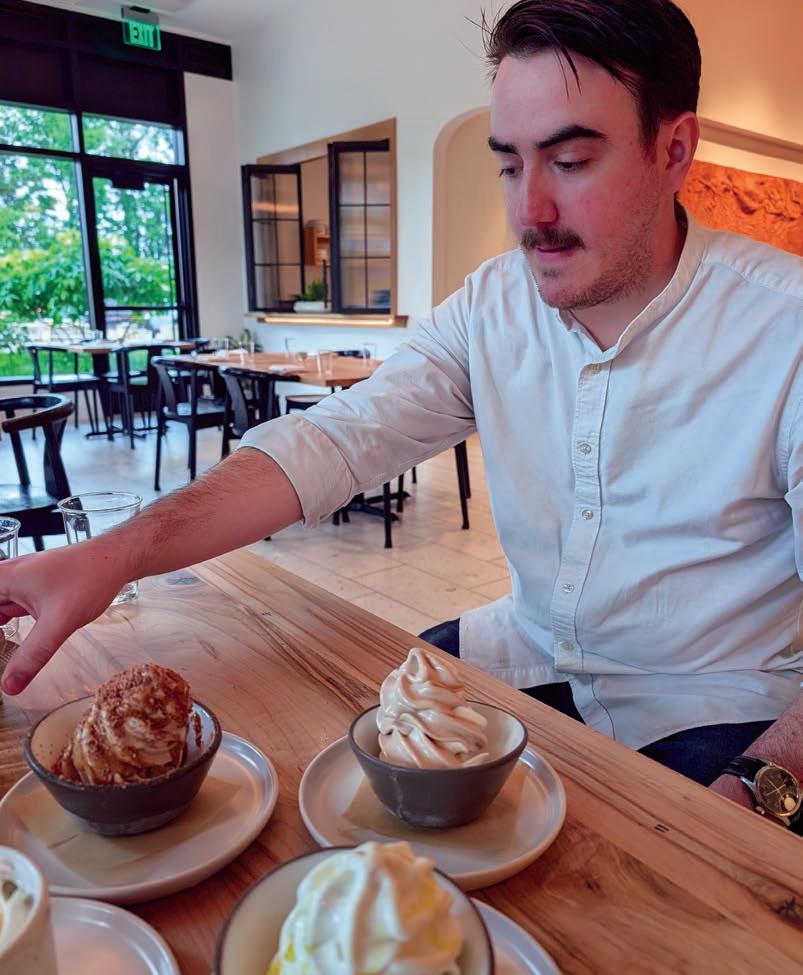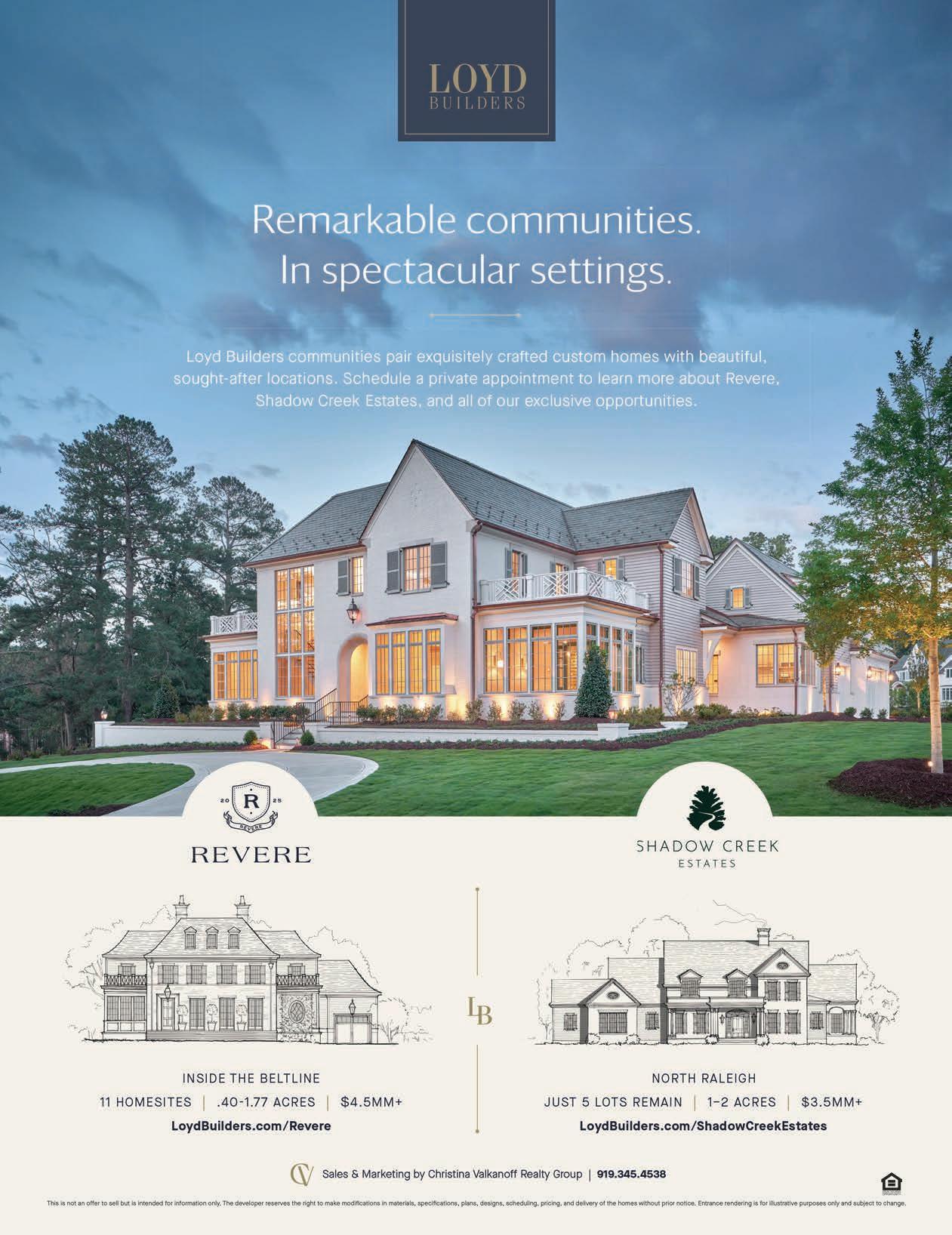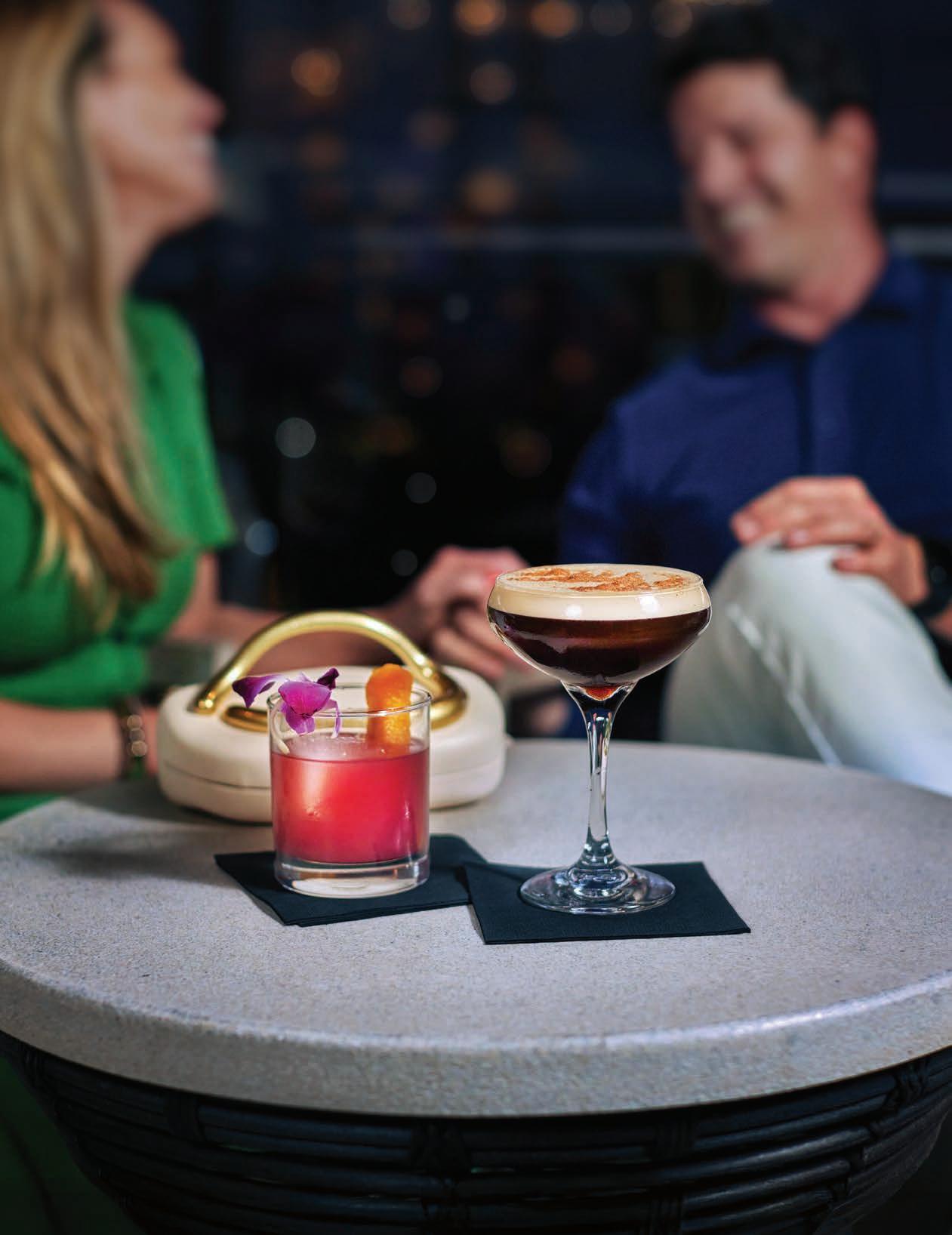

RAISING THE BAR





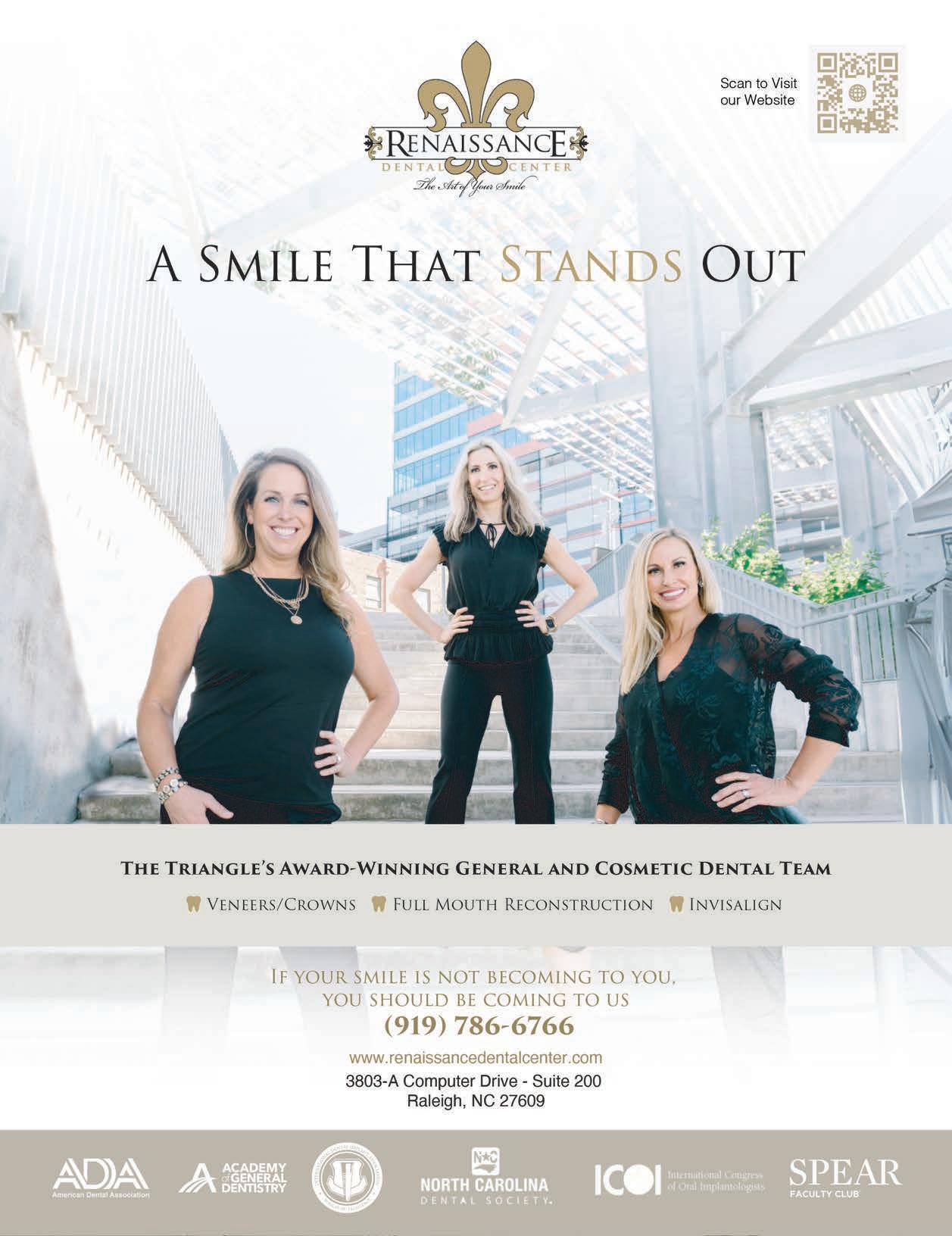


COMING IN

EDITOR’S LETTER
There’s something unmistakable about summer in the Triangle. The days stretch longer, the music gets louder, and the rhythm of life seems to shift—inviting us all to slow down and soak it in. It’s a season made for reconnecting: with our neighbors, with nature, and with ourselves. It’s why our annual theme of summer fun ties so well with our Newcomer’s Guide. People are spending more time outside, offering new opportunities to discover not only what the area has to offer, but also to meet new people.


OUR ANNUAL MIDTOWN AND 5 WEST VOTE FOR YOUR FAVORITE LOCAL BUSINESS PERSONALITIES!
This happened to me while we were out at The Willard taking photos for our rooftop bar cover story (“Raising the Bar,” page 22). I hadn’t yet been to the location, with its stunning views and delicious cocktails, and despite it being work, I had a blast with the team (make sure you check out some behind-the-scenes photos at the back of the magazine). After setting up for a shot, I got caught up in a conversation with another table, which started over their curiosity and ended after nearly 15 minutes of friendly banter about the rise of rooftop bars, sports teams, and how much the area felt like our original hometowns (even though we were all transplants).
In this issue, you’ll find more articles like this; ones that encourage you to explore the area, even if you’ve always lived here. Kurt Dusterberg’s article on what defines North Carolina barbecue (“Pork on Your Fork,” page 32) takes a deeper look at the blending of culture and tradition, something we see more of as our population expands and diversifies. Whereas Josh Manning’s travel article (“Day Trippin’ on Two Wheels,” page 40) reminds us to slow down and take the time to appreciate the beauty and history around us.
If you’re new to the area—or just looking for fresh recommendations—don’t miss our Newcomer’s Guide on the essentials of adopting the Triangle as your new home. It’s packed with tips that will help you settle in and explore with confidence. And if you have children, our Educational Guide provides some overarching guidance to help you navigate the complicated world of the Wake County school system.
Because no summer issue would be complete without a little inspiration for the warmer months, we have beautifully written articles on fun activities (tackle an escape room or join the sumo club) and delicious treats (summer ales for the adults and gelato for everyone). And as always, we celebrate locals by showcasing entrepreneurs and athletes who are making a name for themselves beyond the Triangle.
Thank you for being part of the Midtown community. Your curiosity, style and support continue to shape the stories we tell. I’d love to hear what resonated with you—drop us a line or connect with us online (and check out additional stories on our website).
Warmly,

Kyle Marie McMahon Editor
With husband James at an NC State football game in 2018.


OWNER AND PUBLISHER
Ronny Stephens
EDITOR
Kyle Marie McMahon
ART DIRECTOR
Sean Byrne
CONTENT EDITOR
SENIOR GRAPHIC DESIGNER
Dathan Kazsuk
COPY EDITOR
Cindy Huntley
SOCIAL MEDIA AND COMMUNITY ENGAGEMENT MANAGER
Crystal Watts
CLIENT SUCCESS MANAGER
Erica Sanger
DIRECTOR OF SALES
Collin Pruitt
MARKETING ADVISORS
Paige Gunter
Jessica Douglas
STAFF PHOTOGRAPHER
Jessica Bratton
FASHION STYLIST
Sofia Lujan
DISTRIBUTION
Joe Lizana, Manager DistribuTech.net
CONTRIBUTING WRITERS
Elliot Acosta, Mario Boucher, Kurt Dusterberg, Dathan Kazsuk, Josh Manning, Kyle Marie McMahon, Jennifer Primrose, Charlotte Russell, Crystal Watts, Caitlin Wheeler
CONTRIBUTING
PHOTOGRAPHERS
Josh Manning

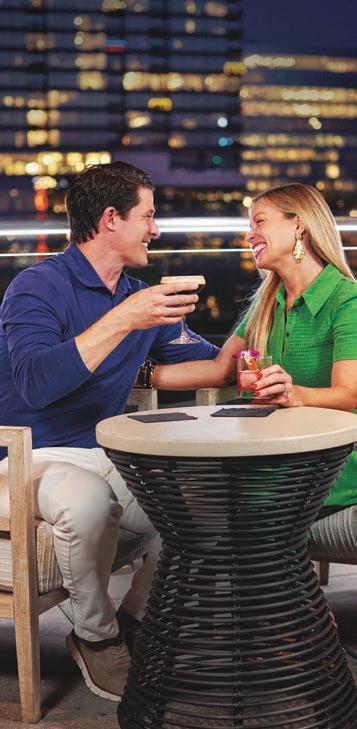
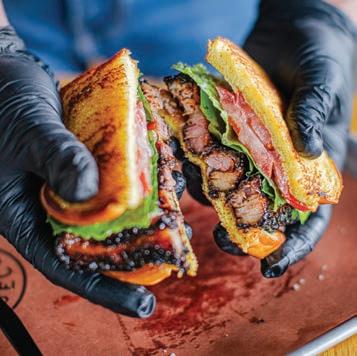




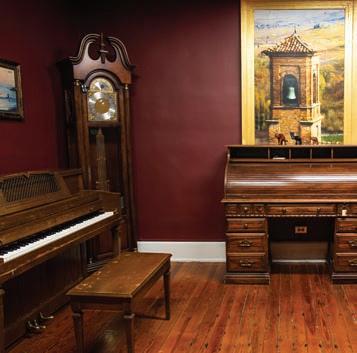


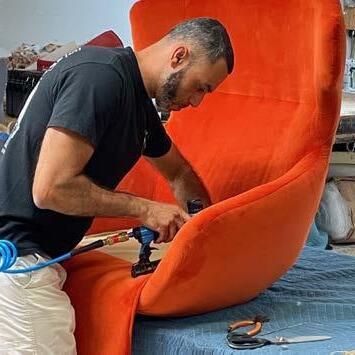
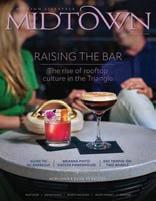
The rooftop terrace of The Willard.
Photo by Jessica Bratton.

CITY SCENE | SOCIAL SCENE
Simply Crepes opened its brand new Oberlin Road location in May with an all-day grand opening celebration. They welcomed guests in the cozy eatery with signature crepes and warm hospitality—plus a special surprise for the first 100 tables. Located at 1028 Oberlin Road, the new spot offers a comforting menu and inviting atmosphere.
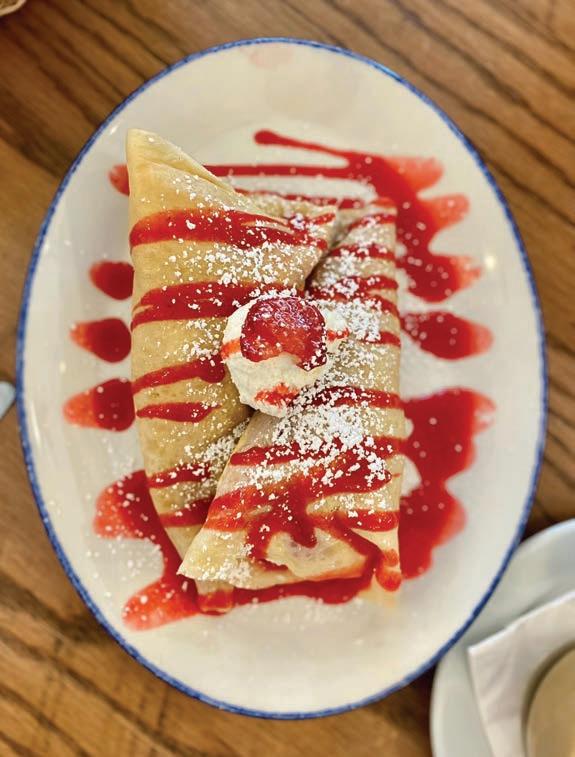
In a significant turn for Raleigh’s art community, the Contemporary Art Museum of Raleigh (CAM) officially paused all exhibitions and in-house programming as of June 15. The difficult decision marked the beginning of a bold and necessary transformation focused on reimagining CAM’s role as a more connected and community-rooted institution. Before the temporary closure, visitors had a final chance to view two stirring exhibitions: Look to the West and Skin of the City, both offering timely reflections on place, identity and perspective. While galleries have quieted, CAM’s spirit endures. The pause is not an ending, but a time to reflect, reset and return with renewed purpose. Photo courtesy of CAM Raleigh.
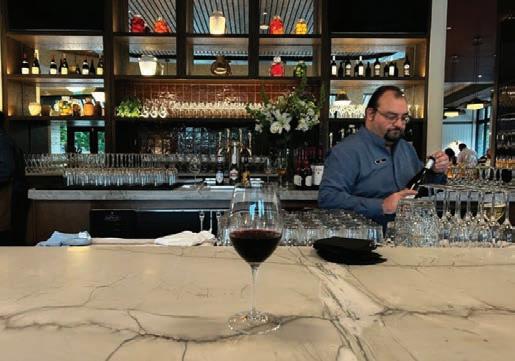
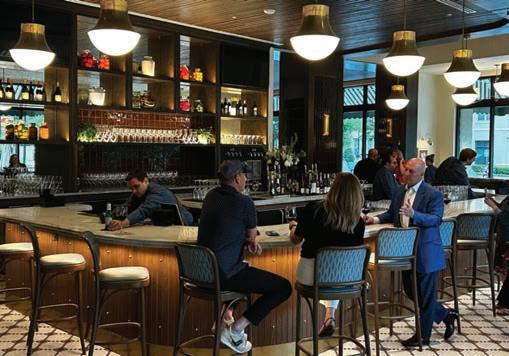
& Wine Bar opened at Glenwood Place, welcoming guests to its newest location with a nod to California’s wine country charm. The grand opening drew food and wine lovers eager to be among the first to experience the reimagined and relaxed concept. Inspired by the flavors and ambiance of Napa Valley, the restaurant offers an inviting setting paired with a thoughtful menu and curated wine list. The opening marked an exciting addition to Raleigh’s dining scene, blending West Coast sophistication with local hospitality.
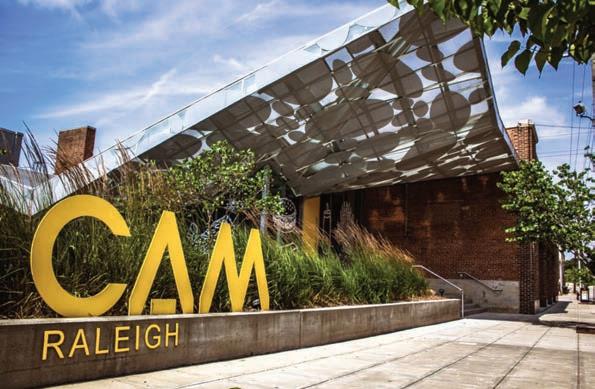
Napa Bistro
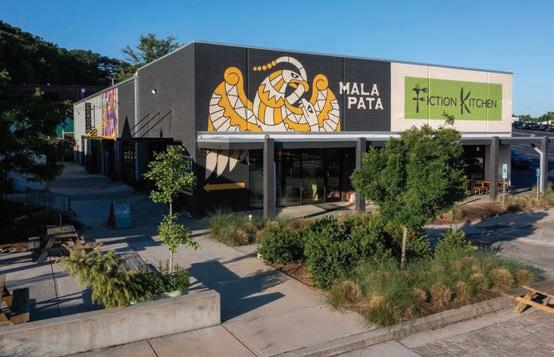
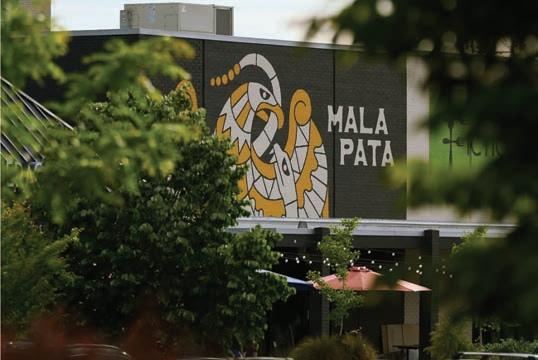
Raleigh’s culinary scene welcomed a vibrant new addition with the debut of Mala Pata and Peyote mini-bar, which opened in May. The concept brings Latin American flavors to the forefront with a focus on traditional masa-making techniques and a dining experience rooted in culture and craftsmanship. Led by executive chef Zack Gragg, beverage director Alison Houser and co-owners Angela Salamanca, Marshall Davis and Eric Montagne, the restaurant is bringing bold dishes and innovative cocktails to the community. Photos by John Hansen and Matt Ramey.

Raleigh celebrated the highly anticipated 18.5-acre Gipson Play Plaza at Dorothea Dix Park. The grand opening was a weekendlong commemoration held June 6–8, including a performance by the Carolina Ballet. Festivities kicked off Friday with a ribboncutting ceremony, followed by two days of all-ages fun—from exploring the Southeast’s largest adventure playground to enjoying food trucks, splash pads and awe-inspiring features (like a 91-foot mega swing!). Photo courtesy of Dorothea Dix Park.
North Hills has raised the bar for athleisure lovers. Earlier this year, Kane Realty announced that Alo Yoga would be opening this summer. The grand opening took place in June for the eagerly awaited L.A.–based company. The storefront is located in the heart of North Hills’ Main District right next to Bartaco. Known for sleek, high-performance premium apparel and a mission rooted in mindful movement, Alo Yoga brings its signature blend of fashion and wellness with curated lifestyle products and immersive retail experiences. Photo courtesy of North Hills.

Let’s be social!
Follow us for all of the don’t-miss events in Raleigh.

SUMMER FLAIR
Summer brings out the fun in our style. Whether you are looking for a new accessory or a whimsical serving pitcher, there is something for every taste. Hang it on the wall, take it to the beach, or bring it along for game night—and show your seasonal flair.



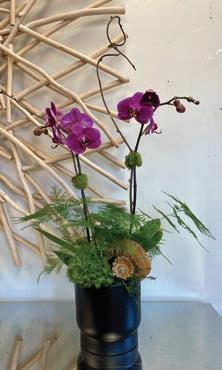
7 2 3 5 1 6
4

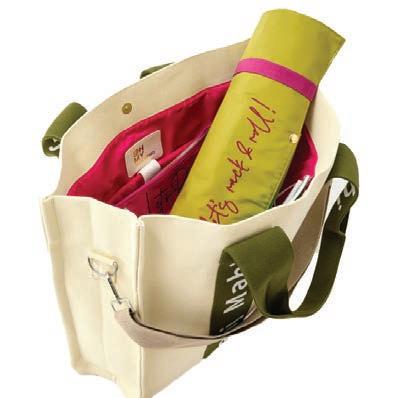

1. Gurgle Pot, $46 | Swagger
2. Hello Sunshine microfiber beach towel, $29 | The Tulip Magnolia
3. The Abigail handbag, $149 | Designed For Joy
4. Serene Garden Fantasy framed print, $895 | Inspirations Home Decor & More
5. Live orchid arrangement, $125 | City Garden Design
6. Mahj It All bag, $145 | NOFO @ the Pig
7. Sunset tile set, $375 | NOFO @ the Pig

News for Raleigh foodies compiled by the Midtown staff, with contributions from Triangle Food Guy Sean Lennard, who blogs at trianglefoodblog.com

Barsa in downtown Durham serves an array of slow-cooked Indian cusine.
Simply Crêpes has opened a second Triangle location at the Shoppes at Oberlin Court, 1028 Oberlin Road in Raleigh. The full-service casual restaurant offers a progressively traditional French country experience in a completely remodeled space. The original location is in North Raleigh’s Lafayette Village.
Napa Bistro & Wine Bar is now serving at 3705 Exchange Glenwood Place. It is the fourth restaurant location for the Conway Restaurant Group in North Carolina, but the first Triangle location. Guests can expect an elevated atmosphere with wine country cuisine, cocktails and a carefully selected wine list.
Cape Fear Seafood Company has opened a fourth Triangle location at 1885 Lake Pine Drive in the MacGregor Square Center in Cary. The space features a large outdoor dining area complete with a fire pit, and the restaurant serves lunch, dinner and Sunday brunch.
Barsa has opened in downtown Durham at 105 W. Morgan Street, Suite 100. The Indian restaurant features a selection of slow-cooked curries, grilled meats and shareable street food–inspired small plates, all rooted in traditional Indian spices and regional recipes.
The Peak on Salem, located at 126 N. Salem Street in Apex, has temporarily closed. The Tramonto Food Group, which also operates MacGregor Draft House and Chef’s Palette, planned to open an upscale Italian concept, Serafina, at the location in June.
Beginning fall 2025, NC State Dining will welcome La Farm Bakery and Mediterranean Deli & Catering to campus. La Farm, a Cary-based artisan bakery, will bring its award-winning breads, pastries and coffee to Park Shops. Mediterranean Deli & Catering will be located in the Atrium Food Court. The Chapel Hill favorite serves Middle Eastern and Mediterranean dishes, including shawarma, gyros and falafel
Famous Toastery has a new restaurant in Fuquay-Varina at 612 Lakestone Commons Avenue. This is the second Triangle-area location and the first to showcase the brand’s refreshed design and updated menu. The offerings include made-from-scratch breakfast, lunch and brunch in a warm, communitycentered space.
Durham-based Lutra Cafe and Bakery is hosting weekly Sunday brunch at Durham’s Cheeni restaurant, located at 202 Corcoran
Street, Suite 100. The brunch menu includes sweet and savory buns, a breakfast sandwich, biscuits and gravy, bread pudding and more. Lutra’s chef-owner Chris McLaurin will open a counter-service restaurant at the American Tobacco Campus by the end of 2025.
Lucky Tree Bakery & Coffeehouse has opened a second location at 225 E. Martin Street in Raleigh’s Moore Square. Expect the same locally roasted coffee and a menu made from whole, wheat-free ingredients, including vegan-friendly options.
Campo Taco Co., a family-owned restaurant offering authentic Mexican cuisine, will open later this year at Rockway, the new mixed-use destination adjacent to Dix Park in downtown Raleigh. Campo will open on the street level of The Row at 1001 S. Saunders Street. The business will soon be joined by the second location of Benchwarmers Bagels
Cuya Cocina Latina, located at 413 Glenwood Avenue, has added Sunday brunch from 11 a.m.–2:30 p.m. Offerings include tres leches French toast, plantain pancakes and huevos rancheros. The restaurant has nightly dinner service Tuesday through Sunday.
Baker’s Dozen Donuts has opened at 1232 W. Williams Street in Apex, the spot formerly occupied by Bonafide Bakeshop & Cafe in Beaver Creek Commons. The handmade donuts are available daily until sold out. Baker’s Dozen has existing locations in Raleigh, Durham and Cary.
Chapel Chill Ice Cream has opened at 630 Weaver Dairy Road, Suite 105, in Chapel Hill. The shop offers 24 flavors, including their own take on classic flavors and others that will rotate. Waffle cones, milkshakes, nondairy items and pup cups are available.
Purple Spoon Açaí will open in the summer at 3801 Hillsborough Street, Unit 141, in Raleigh. The açaí shop crafts vibrant, nutrientrich bowls and artisanal sourdough spreads using the finest organic ingredients.
Mala Pata and its adjacent Peyote minibar has opened at 2431 Crabtree Boulevard, Suite 102, in Raleigh’s Gateway Plaza The dining experience is centered around traditional masa-making and vibrant Latin American flavors. Peyote is a casual seven-seat walk-up bar offering beer, wine and a small menu of craft cocktails.
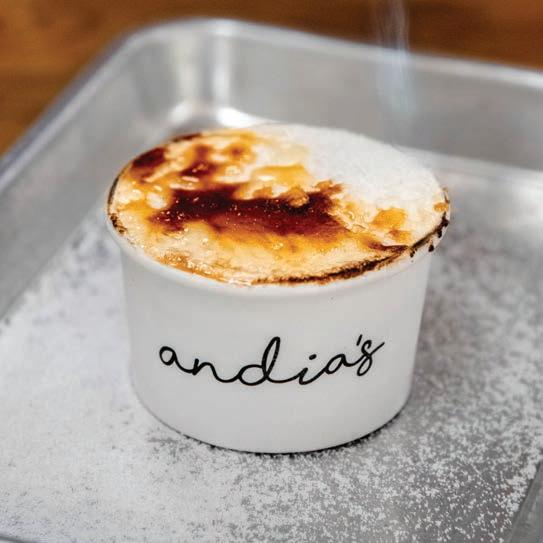

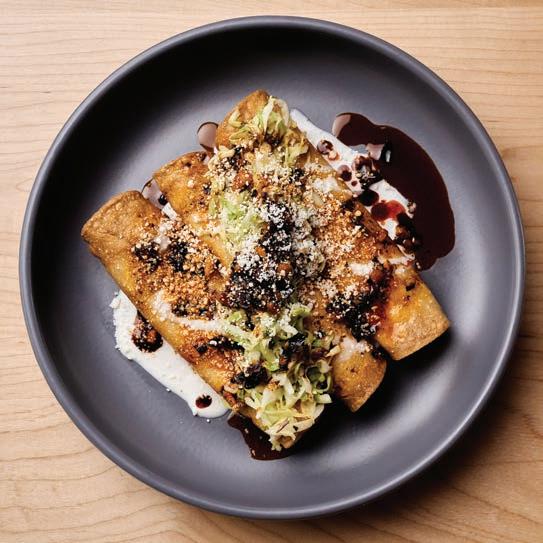
3 1 2 4
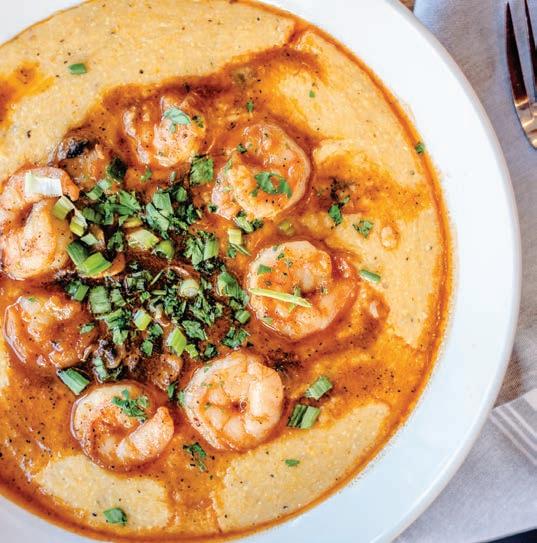
1. ANDIA’S ICE CREAM; RALEIGH, DURHAM, CARY Ice Cream Brûlée. Homemade French vanilla ice cream topped with sugar, then brûléed. Photo courtesy of Andia’s Ice Cream.
3. MALA PATA, RALEIGH
Flautas de Papas. Whipped potato, white corn tortillas, queso oaxaca, salsa macha, curtido and crema. Photo courtesy of Mala Pata.
2. LUTRA CAFE AND BAKERY, DURHAM
Mixed Fruit & Almond Breakfast Bar. Local fruit jam, toasted almond and gluten-free oats. Photo courtesy of Lutra Cafe and Bakery.
4. STIR, RALEIGH
Shrimp & Grits. Mushrooms, green onions, shrimp stock and white cheddar grits. Photo courtesy of Stir.
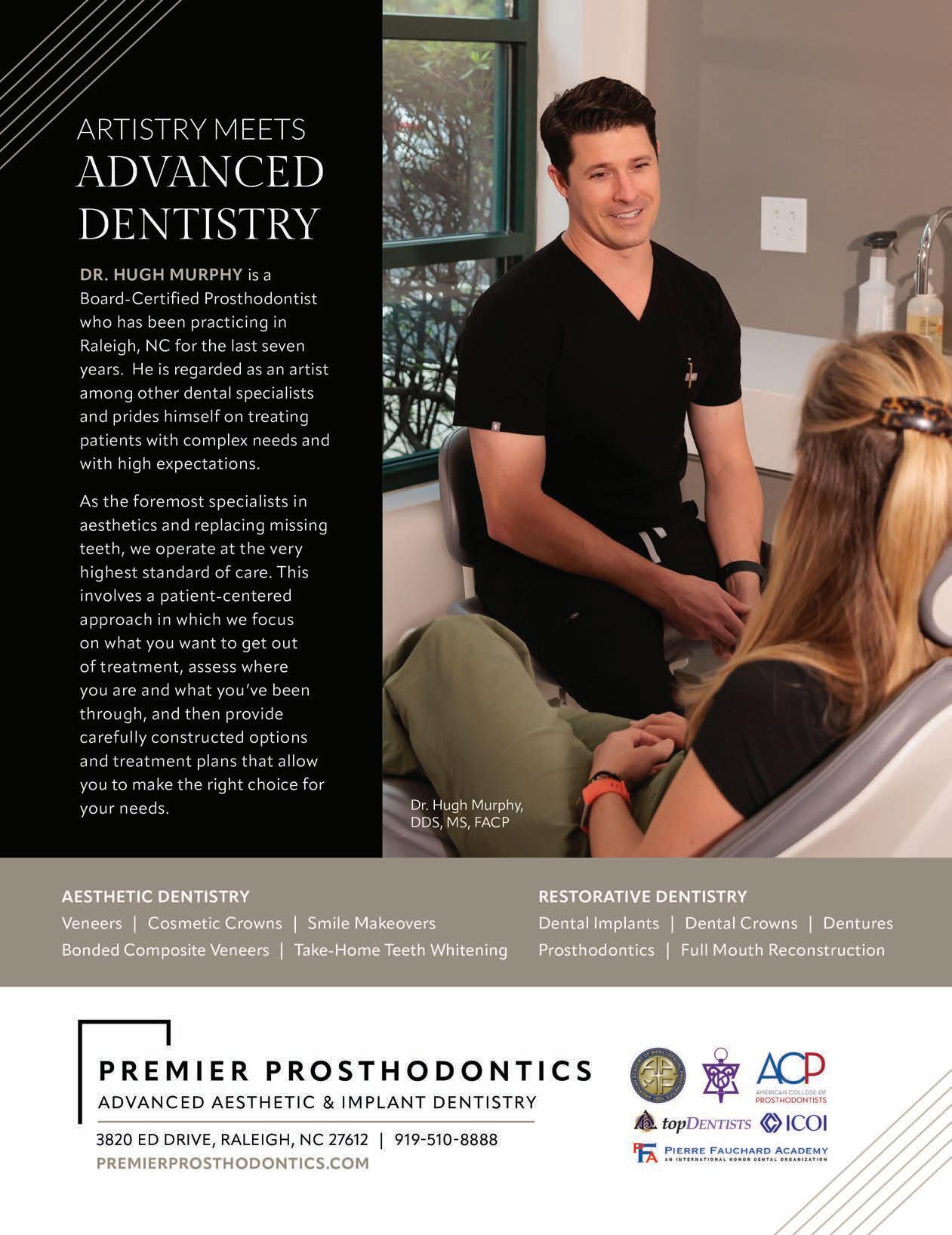
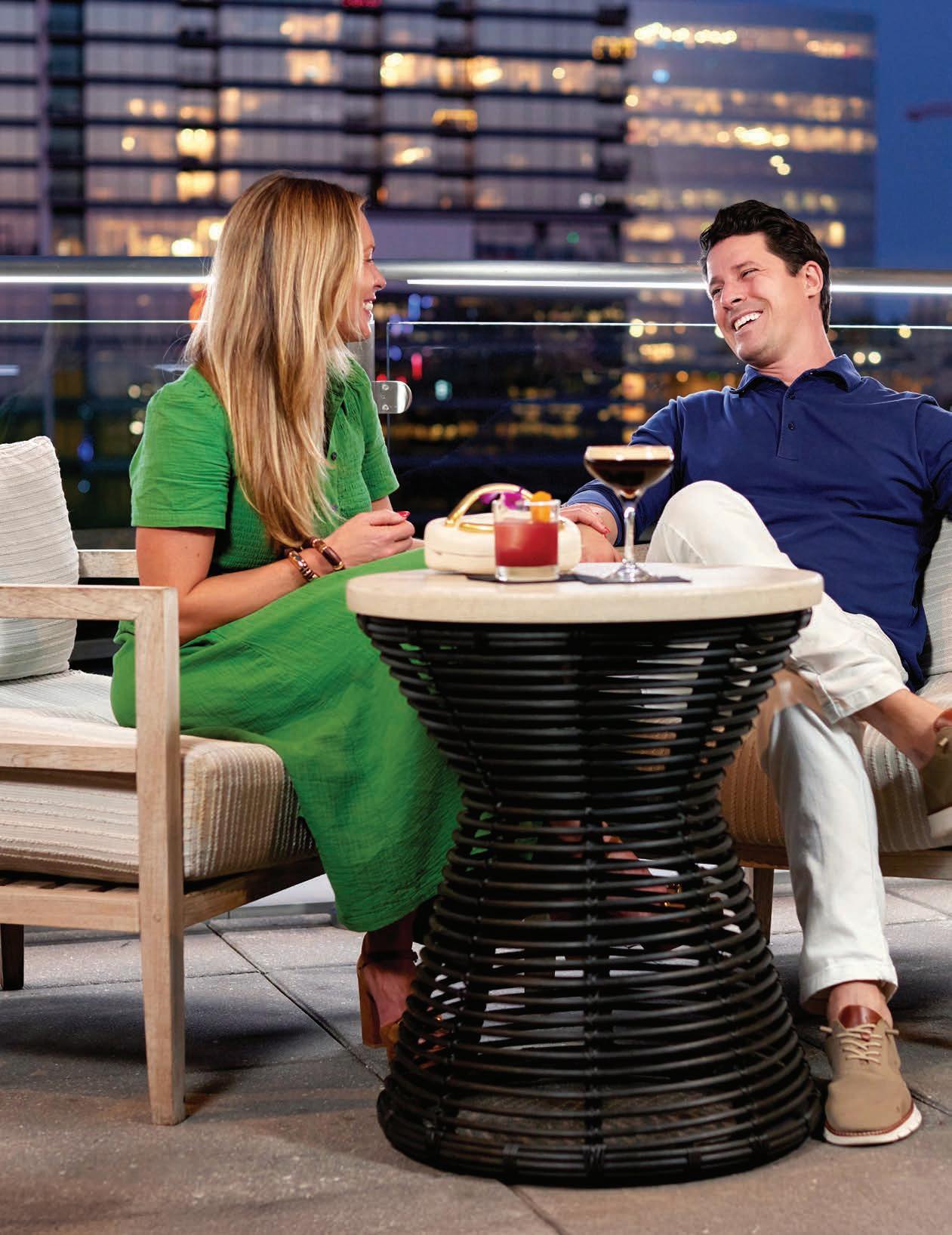

RAISING THE BAR
The rise of rooftop culture in the Triangle
STORY BY DATHAN KAZSUK
North Carolina isn’t exactly the first place that comes to mind when you think of rooftop bar culture. That distinction usually goes to New York, Miami, and maybe even Nashville with its boot-stomping rooftop stages.
But if you’ve looked up lately while walking through Raleigh or Durham, you’ve probably noticed something: Our cities are finally taking the hint. Rooftops are in, and the Triangle is climbing skyward—one cocktail at a time.
For years, Level7 in Raleigh’s North Hills was quietly serving espresso martinis and sunset views without much rooftop competition. It was the exception, not the rule. But in the last year or two, the game has changed. Seemingly overnight, rooftop spaces have gone from novelty to necessity. They’re the new benchmark for where to meet after work, take a date or sip a Negroni while pretending you’re not checking your phone every three minutes.
There’s no better setting for a romantic evening than a rooftop bathed in golden-hour light. Whether it’s a first date or your 15th anniversary, something about being eye level with the skyline turns even the simplest cocktail into a shared memory.
There’s something special about a good rooftop. The elevation. The fresh air. The view of the skyline. And for business owners? It’s real estate gold. One extra level means more square footage, bigger views and a front-row seat to every sunset selfie.
ON LEFT: Sarah and Hugh Murphy of Raleigh enjoy a night out at The Willard atop the AC Hotel in downtown Raleigh. Photo by Jessica Bratton.
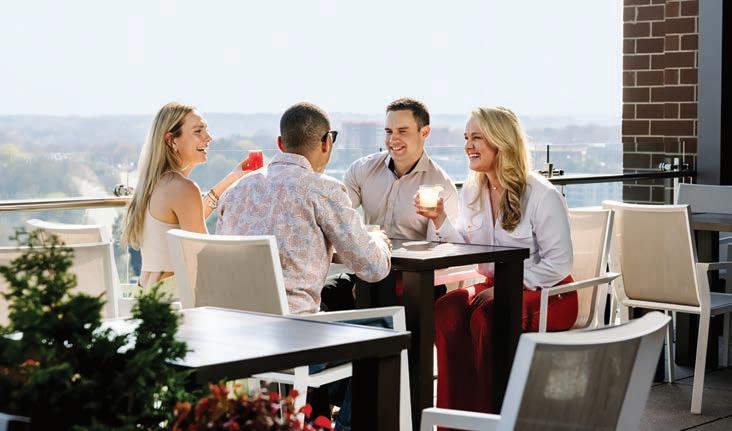
RALEIGH RISES UP
I n Raleigh, places such as The Willard and 10th & Terrace helped bring rooftop vibes to downtown proper. The Willard, perched atop the AC Hotel, opened in 2021 after what Conrad Most, the downtown Raleigh market food and beverage director for Summit Hospitality Group, described as “a labor of love.” Navigating supply shortages and delays post-Covid, the team pushed through and emerged with one of the most desirable rooftop settings in the city.
“ We had a great honeymoon period here, and we’ve tried to stay fresh and keep things moving with new ideas and events,” Most says. “People respond to creativity—especially when it feels like something they can take home with them.
One of those creative hits is Cocktails & Cuisine, a monthly series designed to teach guests how to entertain at home like pros—without needing a commercial bar setup. It’s educational. It’s fun. And for the budget-conscious, it’s also a practical night out.
O ver at 10th & Terrace, which recently celebrated seven years in downtown Raleigh, they’ve doubled down on comfort. Literally. A six-figure investment added a pergola system that covers a large part of the rooftop, shielding guests from sun and storms and extending the season well into fall and winter. “It’s not Miami weather here, but we’ve added heaters under the pergola to keep people cozy in November and December,” says Most. “The view’s still there. The vibe’s still there. Now you just don’t have to freeze for it.”
Conveniently located next to the Martin Marietta Center for the Performing Arts and within easy walking distance of Red Hat Amphitheater, both rooftop spots have leaned into event-driven traffic. During major concerts or conventions, they curate themed cocktails and limited-time menu items to match the crowd—without oversaturating the experience. “It’s not just about capitalizing on traffic,” Most adds. “It’s about reading the room—knowing what kind of guests are coming and giving them something they’ll remember.”
Not to be outdone, Durham’s skyline is getting its own buzz. Bull City is in on the action, from the sleek rooftop at Unscripted to the swanky new perch at The Velvet Hippo (yes, that’s a real name) and Fizzwerks, which offers up craft hard seltzers alongside cocktails and a great view.

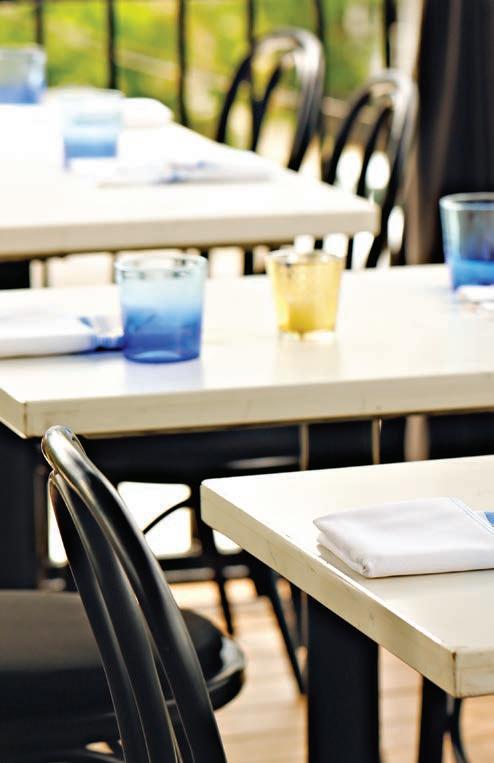
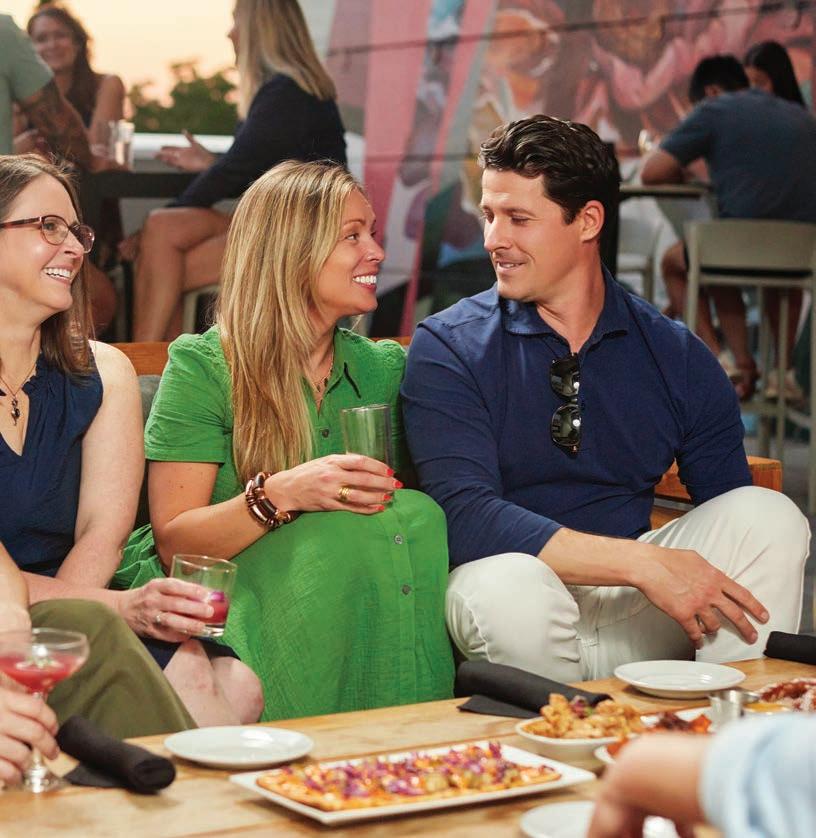
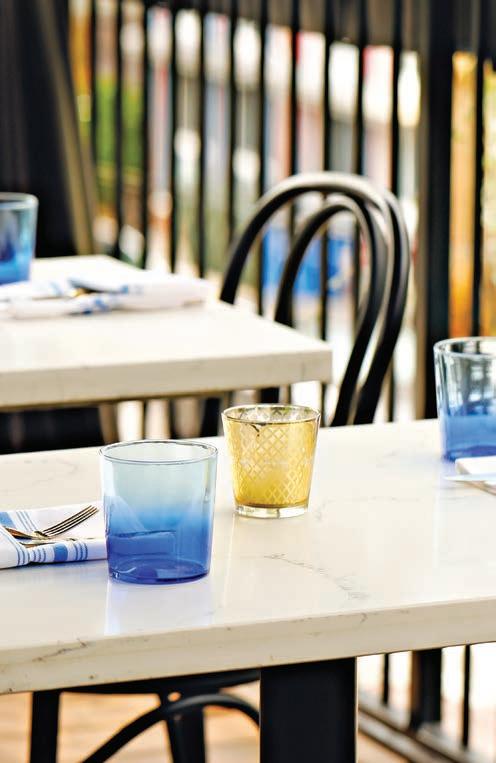
OPPOSITE PAGE, TOP: The addition of a pergola at 10th & Terrace shields guests from the worst of the elements without sacrificing the beautiful view. But when the weather is right, the sunshine adds to the atmosphere. Photo courtesy of Anna Routh Barzin.
LEFT: The Willard offers a variety of seating options, such as these low couches, which provide a more intimate experience and a nearby fireplace (for those cozy nights). High tops and traditional tables are also available.
Small sharing plates, such as the flatbread, fill you up without stopping the flow of conversation.
Photo by Jessica Bratton.
BELOW: Jolie's intimate setting makes for a romantic date night. Photo courtesy of Jessica Crawford.
Now, let’s take a closer look at some of the other rooftop spots in Raleigh and Durham:
Jolie
I nside Raleigh’s historic Oakwood neighborhood, Jolie is Chef Scott Crawford’s intimate French bistro, delivering charm and elegance. While the main dining room exudes cozy sophistication, it’s Le Rooftop that elevates the experience—literally and figuratively. Designed by Louis Cherry Architecture, the rooftop features a custom canopy, lush greenery and candlelit tables, creating a romantic atmosphere that feels worlds away from the city below. Guests can enjoy the full French bistro menu under the stars, making it an ideal setting for date nights and special occasions.
Highgarden
H ighgarden, perched atop Glenwood South, offers an enchanting rooftop experience perfect for date nights. This open-air lounge boasts panoramic views of downtown Raleigh complemented by lush greenery, cozy cabanas and ambient lighting. The setting creates an intimate atmosphere where couples can enjoy craft cocktails, fine wines and small bites under the stars. Before its transformation into Highgarden, the location was home to Solas, a vibrant nightclub that was a staple in Raleigh’s nightlife scene.
BELOW, LEFT:
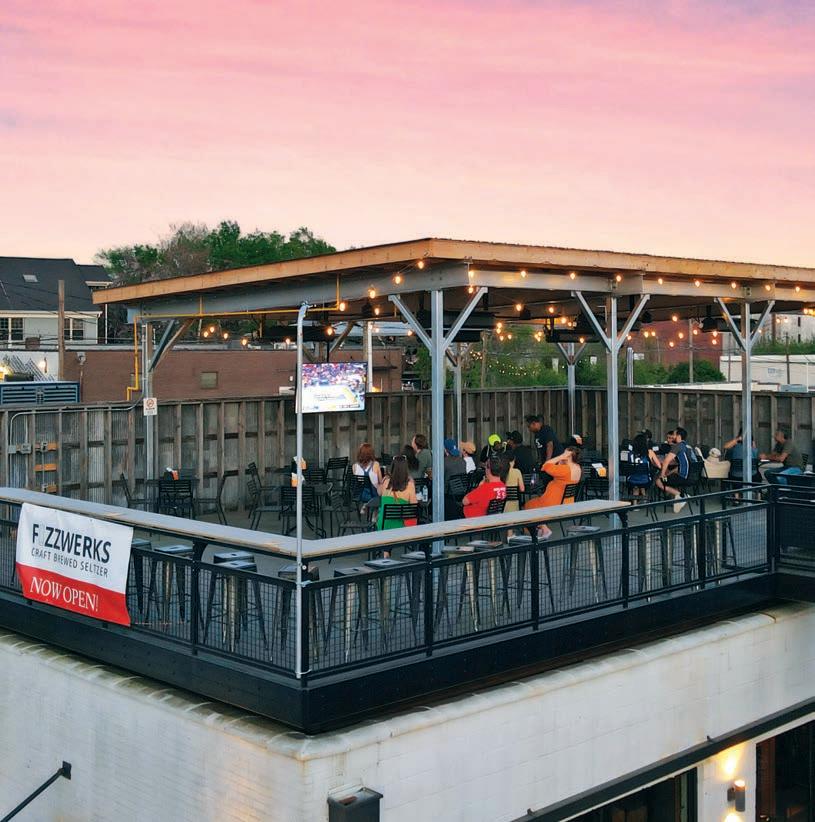
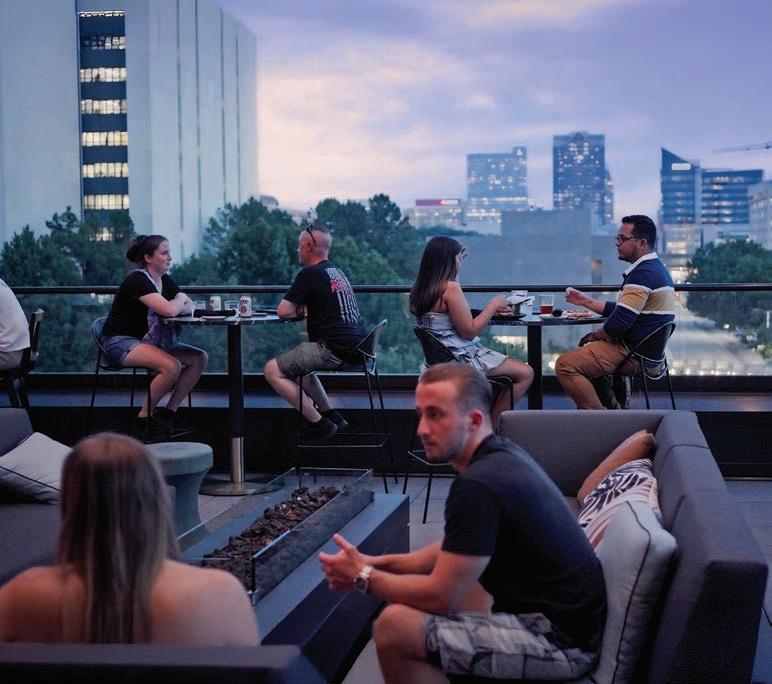
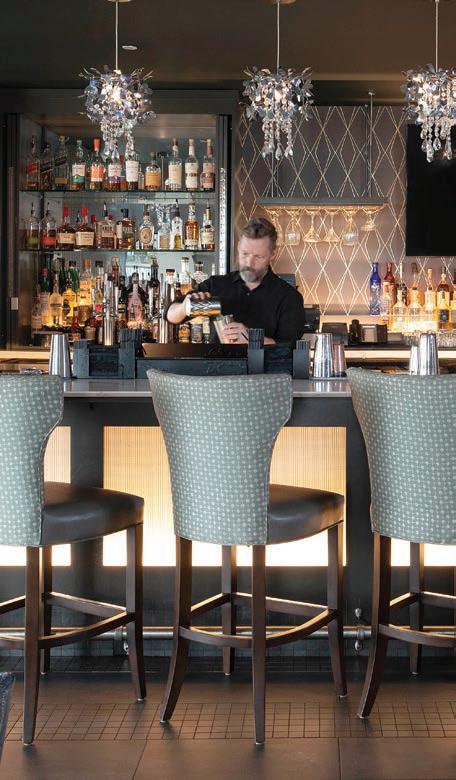
RIGHT: Craft-brewed hard seltzer bar Fizzwerks offers a more casual vibe. Photo courtesy of Fizzwerks.
BELOW, RIGHT: 10th & Terrace's bar provides that upscale setting along with delicious, handcrafted cocktails. Photo courtesy of Anna Routh Barzin.
High Rail in Seaboard Station offers spectacular panoramic views of the Raleigh skyline. Photo courtesy of High Rail.
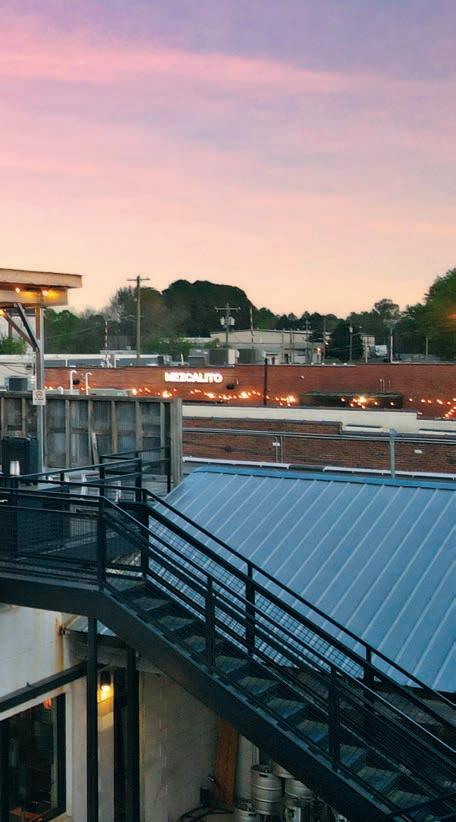
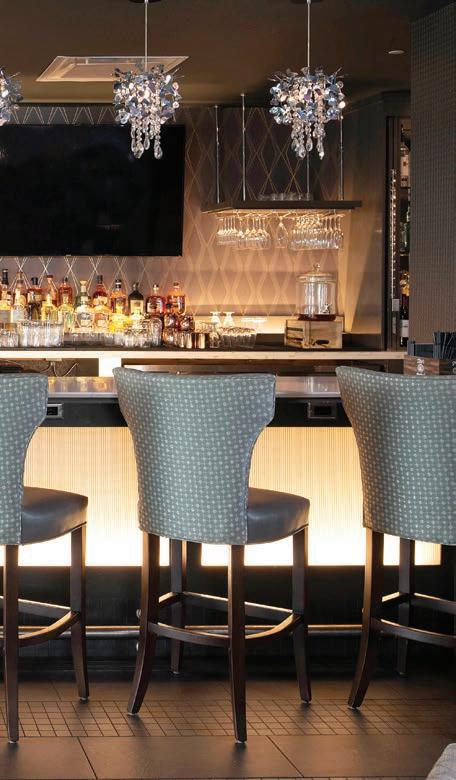
High Rail
H igh Rail, located atop the Hyatt House at Seaboard Station, opened in November of last year. This seventh-floor venue offers panoramic views of the city skyline from its expansive 4,500-square-foot terrace, complete with fire pits, an outdoor bar and plush lounge seating. “The main attraction is the view, followed by our updated menu of signature elevated cocktails and sharable plates,” says Anthony Zinani, general manager of Hyatt House Raleigh Downtown/Seaboard Station. “[Director of restaurants] Ingrid Folkers did a fantastic job curating a menu specifically tailored for our space.”
The Lenny
Perched atop the 11th floor of 555 South Mangum Street, The Lenny is Durham’s latest rooftop gem. This elevated venue offers sweeping 180-degree views of downtown Durham, including a prime overlook of the Durham Bulls Athletic Park. Imagine watching a Bulls win on a night where the fireworks explode at eye level while enjoying a bottle of expensive sparkling wine and sipping on freshly shucked oysters! The menu features brasserie-style small plates with a creative twist, complemented by an agave-centric cocktail program. Whether you’re indulging in their Sunset Hour specials or enjoying a weekend brunch, The Lenny provides a vibrant atmosphere for any occasion.
The Velvet Hippo
Yes, The Velvet Hippo is a real place. And yes, it’s just as funky as it sounds. Sitting on the third floor of 119 Orange Street, this new addition to downtown Durham is mixed parts tropical escape, neighborhood bar and rooftop cocktail wonderland. It’s hard to define—but that’s kind of the point. Inside, it’s moody and lounge-y with serious “sip and stay awhile” energy. But head up to the rooftop and you’ll find a splash of color, a skyline view, and a drink menu that doesn’t take itself too seriously—slushies, mocktails, frozen things with umbrellas … you get the idea. It’s the kind of place where everyone’s welcome and no one’s judging your second round.
Fizzwerks
I f you haven’t heard of Fizzwerks yet, that’s about to change. Tucked away at 618 Ramseur Street in Durham, this spot claims the title of the city’s first craft-brewed hard seltzer bar.
O wners Ragen Lowek and Andy Pruss aren’t just cracking open seltzer cans here—they’re doing everything in-house, using real fruit, herbs and whatever’s in season, giving their seltzers a fresh, punchy edge that puts the big-name brands to shame. And then there’s the rooftop. It offers chill vibes, low-key elegance, and an elevated view to remind you you’re in the middle of a city—but without all the noise.

The Roof at The Durham
Head up to the sixth floor of The Durham Hotel and you’ll discover The Roof at The Durham, which offers a quintessential rooftop experience in the heart of downtown for the past 10 years. This mid-century modern space boasts panoramic views of the city skyline, making it an ideal spot to catch a stunning sunset or enjoy the evening lights. “We recently brought back our oyster program and do oyster specials on Sundays,” says Andrew Trevillian, manager of food and beverage at The Durham Hotel. “We’re also doing a Build-Your-Own Spritz Bar on Sundays.”
WHAT’S FUELING THE TREND?
Blame it on the pandemic. Blame it on Instagram. Blame it on the Triangle finally growing up. Our cities are building higher, thinking smarter and designing with ambiance in mind. That extra floor isn’t just square footage. It’s an experience. It’s date night with a view. It’s happy hour with a breeze.
“People want something different,” says Most. “And we’ve seen that rooftops give them a way to escape—without really going anywhere.”
A nd as rooftops become more ingrained in our drinking and dining culture, the competition is heating up in the best way. From themed events to rooftop yoga and curated playlists for Red Hat shows, it’s clear these venues aren’t just counting on the view to keep people coming back.
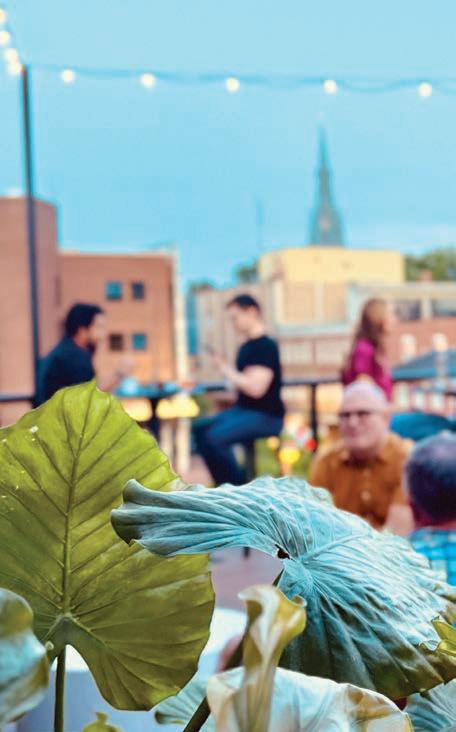

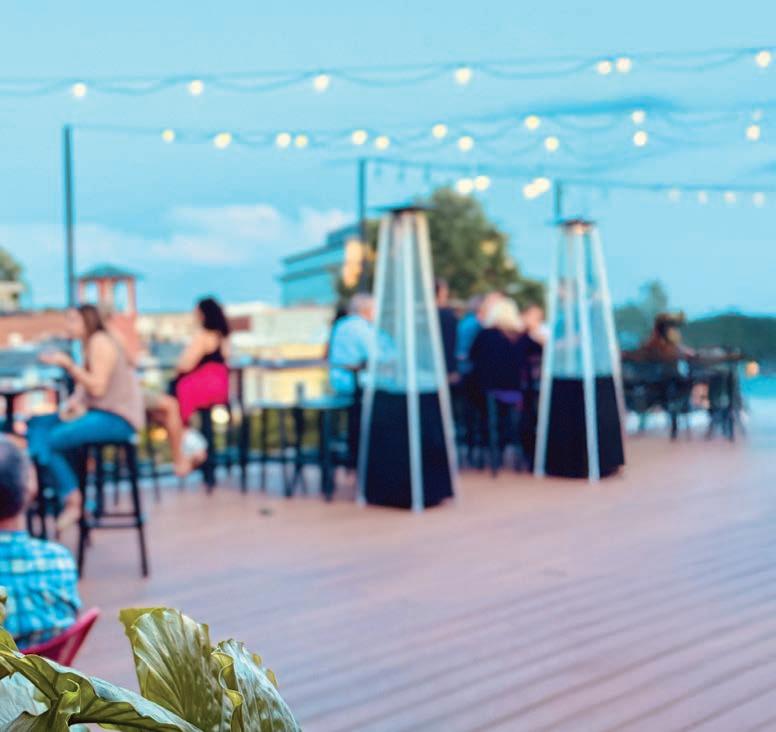

Velvet Hippo's friendly rooftop gives off a neighborhood party vibe. With a lounge-like atmosphere and patio-style lighting, it may be easy to forget you're in downtown Durham, even with the amazing view. The laid-back atmosphere makes you feel as though you're in another world—just ask Dathan Kazsuk and Jennifer Primrose. Photos of exterior courtesy of Velvet Hippo.



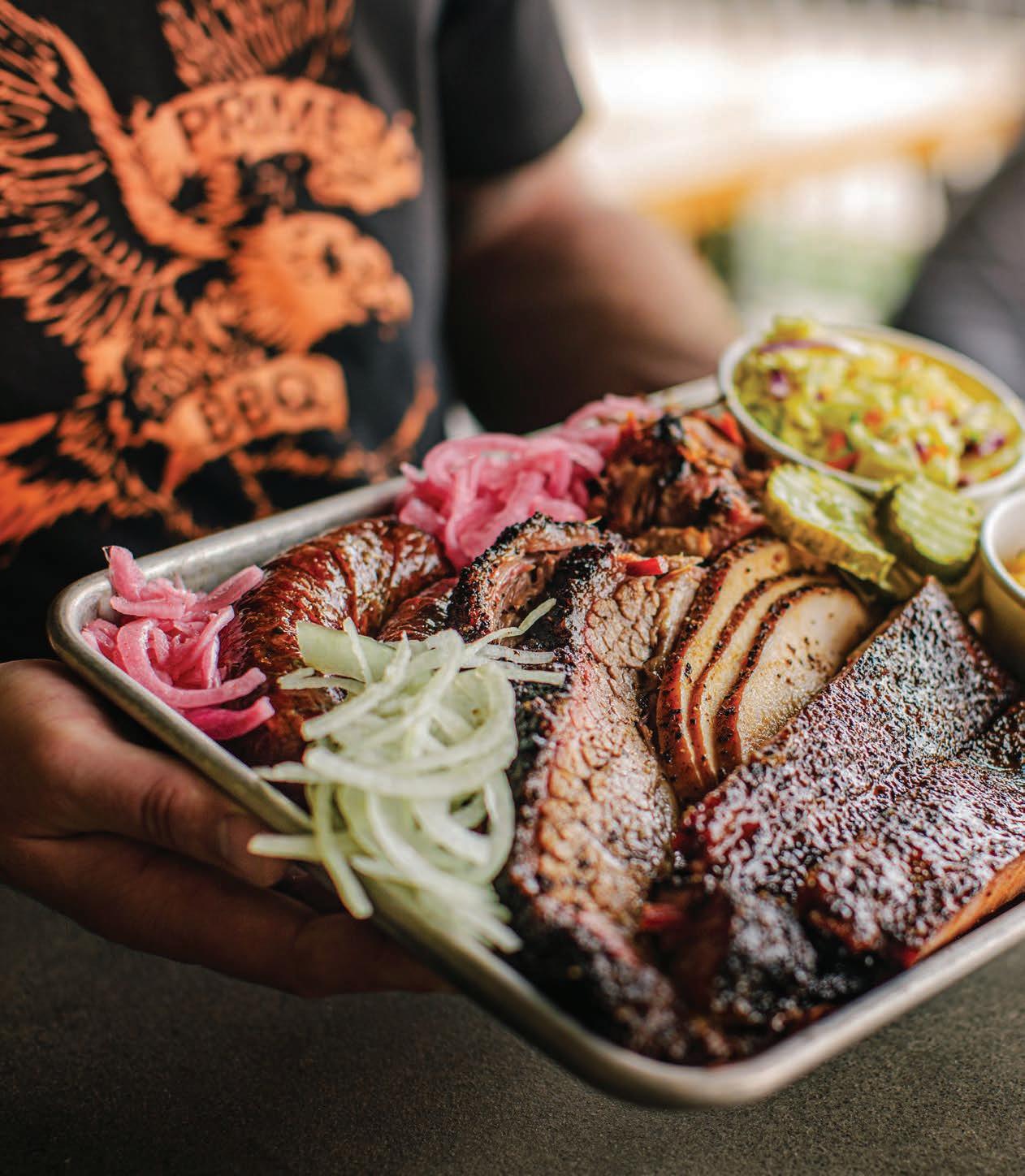
Prime



on your
Looking for great barbecue? Tastes and traditions are expanding.
STORY BY KURT DUSTERBERG
Christopher Prieto is acquainted with all the finer points of the barbecue game. The owner of Prime Barbecue in Knightdale is a champion pitmaster, an author and a celebrity chef who has appeared on the Food Network.
So whenever the topic turns to his lifelong culinary passion, he is well aware that strong opinions will follow.
“Anytime you’re in a barbecue state and talk about barbecue, it’s always an introduction to an argument,” Prieto says. “There’s a lot of history when it comes to North Carolina barbecue, and you have to give reverence to that.”
W hile states like North Carolina and Texas have long been at the forefront of the cuisine, barbecue has its own traditions in towns across the country. In the Tar Heel State, the conversation often comes down to eastern style (whole hog, with a vinegar and pepper base) versus Lexington or western style (pork shoulder, with a red sauce made from tomatoes).
But today, those general differences give way to endless variations of tasty pork dishes. Sam Jones, who owns Sam Jones BBQ in Raleigh and Winterville (near Greenville), puts it a different way. “There ain’t a nickel’s worth of difference between two pigs,” he says. “Barbecue is defined by geography. What you call barbecue is defined by what piece of dirt you are standing on.”
Barbecue in Knightdale offers up a mouthwatering selection of meats and side dishes that are a blend of Christoper Prieto's traditions: his Puerto Rican roots, his Texan upbringing and his North Carolinian family ties.
Photo courtesy of Azul Photography.
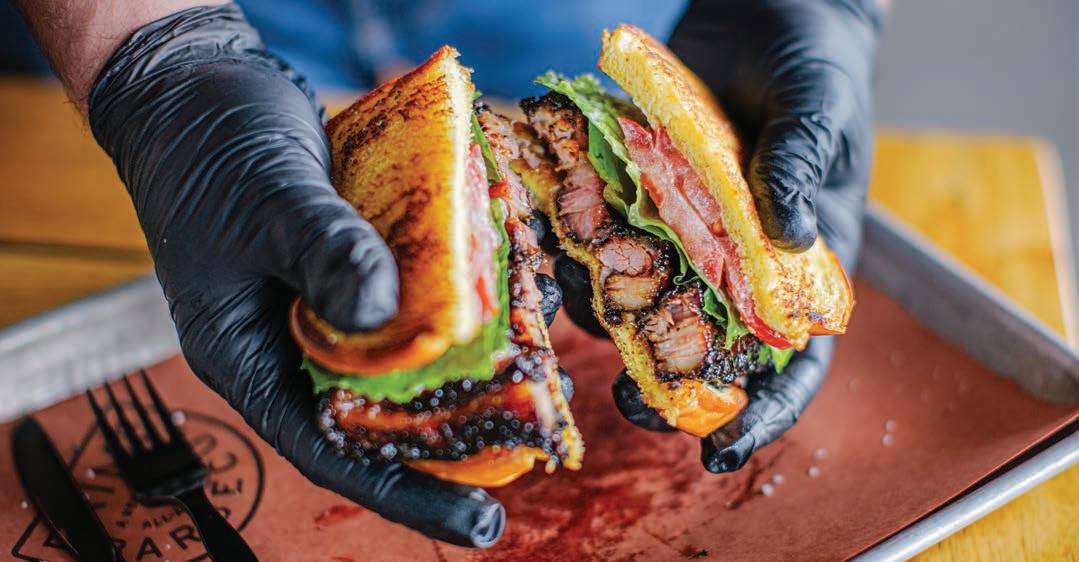
Prieto started his first barbecue pit as a 13-year-old in Richmond, Texas. His dad loved pork, and Christopher wanted to cook it for him. “Right then and there,” he says, “I knew I wanted to be a barbecue man.”
T hat was 1995, and in the years that followed, traditions began to blur.
“People are now seeing this on their [social media] feeds, they’re traveling a lot more, people are experiencing a lot more,” says Prieto, who often cooks with Puerto Rican seasonings to honor his family’s heritage. “When I got into the competition circuit, I realized how vast people’s palates are and how beautiful it is to cultivate the different tastes and flavor profiles. The same North Carolina traditions are also carried in other states, and there’s a lot to be looked at there. It’s something to be admired.”
Jones has seen similar trends in barbecue. His grandfather, Pete Jones, opened the renowned Skylight Inn in Ayden in 1947. Sam got his first
taste of the barbecue business while wiping down tables at age 9. Today he owns the landmark restaurant, which made its reputation in the whole-hog tradition. “In eastern North Carolina, everybody raised hogs,” Jones says. “That was the most economical way to feed a large number of people.”
But like other pitmasters, he saw that the barbecue game was changing. “Those lines get blurry because barbecue got a renaissance about 10 or 12 years ago, where it wasn’t peasant food anymore,” he says. “About 20 years ago, Southern food became part of a cuisine that wealthy people appreciated. That’s when barbecue came out of the culinary armpit.”
P rieto’s answer to the wide variety of pork traditions is to embrace all of it. “If I want a traditional Carolina whole hog, I’m going straight to Ayden,” he says. “I’m going to eat some chopped whole hog at one of Sam’s places with


OPPOSITE PAGE: Prime Barbecue in Knightdale offers sandwiches with your choice of meat, like this brisket—or if you're really hungry, grab a Full Nelson, stuffed full of beef rib, sliced house-made sausage, pulled pork, slaw and pickled onion.
THIS PAGE: No barbecue meal would be complete without dessert, like a cobbler or banana pudding—something that keeps the kids (and adults) happy.
Photos courtesy of Azul Photography.
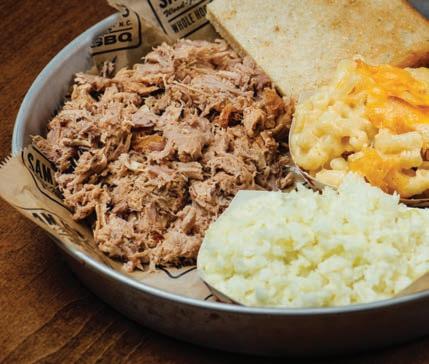
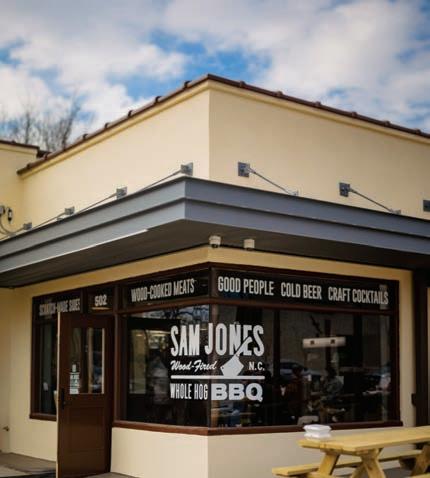
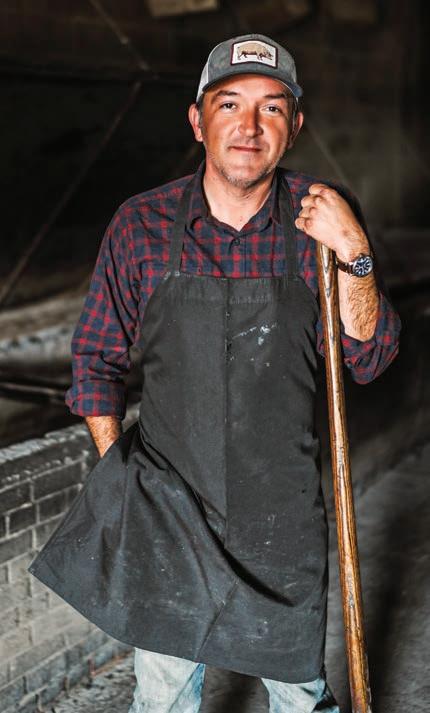
the cornbread and hushpuppies and that slaw.” And what about South Carolina, with its peculiar tradition? “Even mustard on chopped pork. It’s something to be admired.”
P rieto travels the country, sharing his cooking skills at private and corporate events. But locals can take part in his Ultimate School of Barbecue, held four times a year at his Knightdale restaurant. The events are suited for beginners and seasoned pitmasters alike. Guests learn to make brisket, whole hog barbecue, pork belly bacon and more. The class also covers meat selection, seasoning profiles, preparation and cooking details.
“It takes reps. You cannot be great out of the gate,” Prieto says. “No one is. I don’t just teach you how to cook a brisket, I teach you the psychology of what I went through to get to this point.”
Of course, cooking a whole hog is not an enterprise to be taken lightly. The process involves cooking with combustible coal or wood at low temperatures to ensure the correct tenderness. And the entire preparation process involves more than a day. Prieto says it typically takes nine hours to cook a pig, while a brisket needs 19 hours on a smoker, “with a real wood fire and a real human being here 24 hours a day, tending that fire every 45 minutes.”
Jones offers a pretty good start-tofinish explanation of the process. “You take a whole hog, split that backbone, put it on a pit and you start burning your wood down. And you start shoveling coals under it. When that thing starts rendering, it’s dripping fat onto the coals. Plumes of smoke rise up from the coal bed and interact with that meat. Smoke only interacts with meat until it gets to a certain temperature. During that
time frame, there is something that transpires that you cannot replace with anything else.”
By the time your favorite pork dish reaches the table at a local barbecue joint, a lot of work has gone into your meal. That’s why Jones offers a friendly reminder. “I hear people say, ‘I can’t believe my barbecue sandwich costs $8.50.’ I’m thinking, do you realize that that comes from a whole animal that someone started interacting with 24 hours ago?”
Once you settle on a pork option, there’s also the issue of side dishes. And again, how you round out the plate depends on where you are served. At Sam Jones BBQ you can choose from the classics, including sweet slaw, baked beans, mac and cheese and cornbread. But in a nod to the modern-day barbecue world, Prieto suggests that classic sides belong with classic barbecue dinners. “Baked beans, mac and cheese, coleslaw … those things have to be excellent,” he says. “They have to complement the meat you’re serving. I can’t make a Skylight Inn coleslaw and make it complement my shoulder or my whole hog. It’s just not going to make sense. It’s two different flavor profiles.”
I f all of the choices seem like too much, Jones says the best option is to go old school.
“My style is a barbecue sandwich, chopped, no sides,” he says. “A barbecue sandwich with extra coleslaw. The sweetness of the coleslaw balances out the acidity of the pork and the vinegar.”
A nd for those who see themselves as a potential pitmaster, Prieto offers some encouragement.
“I am a dyslexic ‘C’ student who just happened to really like barbecue. If I can come to a point of mastery, anyone can.”
A key ingredient for Christopher Prieto's barbecue is hospitality. He spoke with us in-depth about his approach to barbecue, his restaurant in Knightdale and what serving others means to him. Use the QR code below to read the full article, which includes grilling tips and a recipe for Texas Twinkies from this James Beard semifinalist.
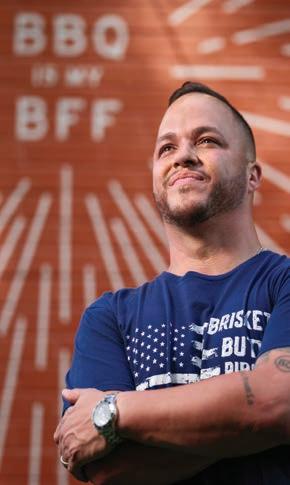

OPPOSITE PAGE: Sam Jones has been a part of a family barbecue legacy, serving up traditional chopped wood-fired hog alongside classic sides like slaw and macaroni and cheese. Photos courtesy of Sam Jones BBQ.
THIS PAGE: A key part of many barbecue tables is the sauce, and Prieto is a master, serving up a variety of sauces he plans to bottle and sell later this year. Photos courtesy of Azul Photography.
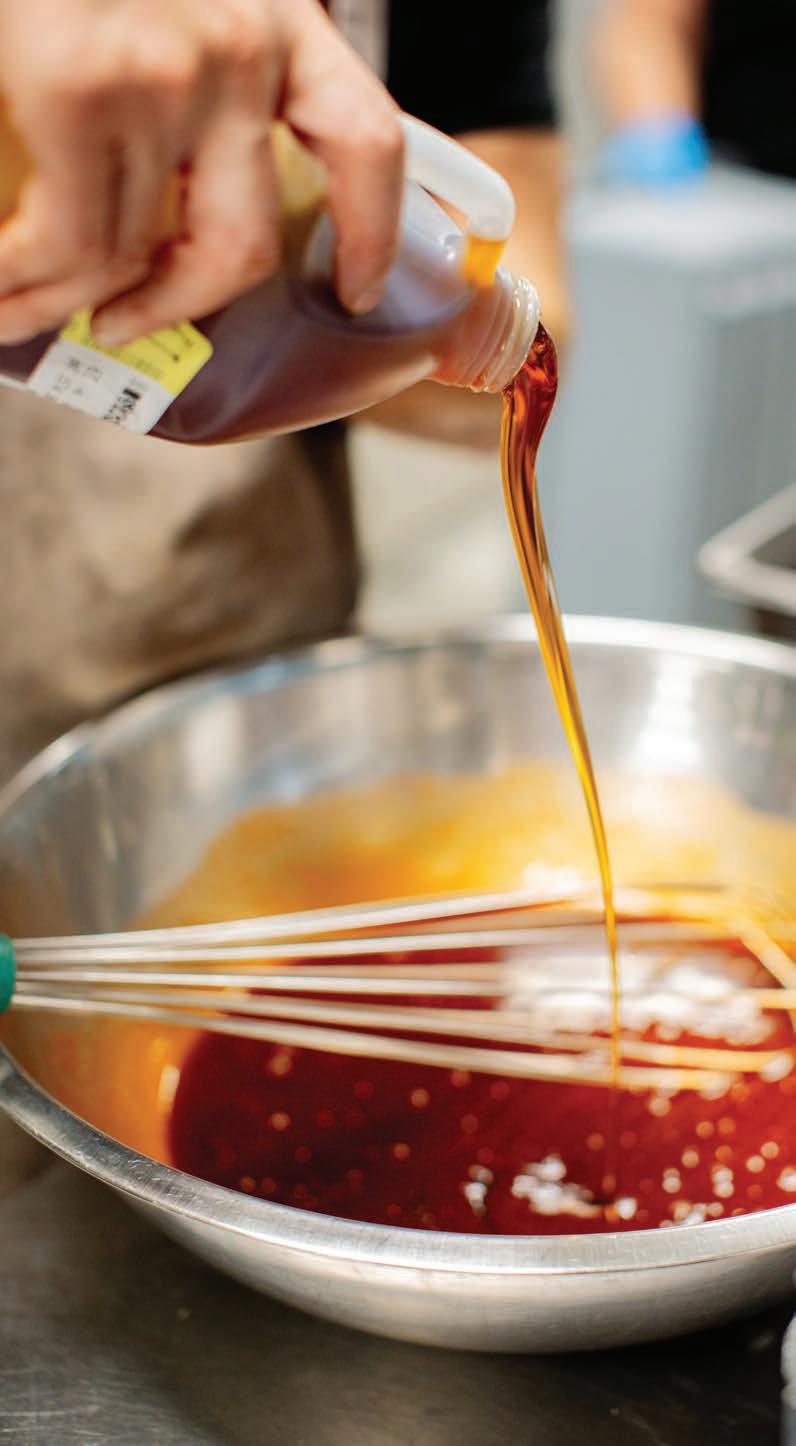






Each of the four elements are experienced when traveling by motorcycle: the landscape, crisp air, massive expanse of Jordan Lake and fire brought forth when the spark plugs ignite, causing a controlled explosion propelling you forward.

DAY TRIPPIN’ ON TWO WHEELS
STORY AND PHOTOS BY JOSH MANNING
T here’s something extraordinary about traveling by motorcycle. Your senses are heightened as you become one with the environment. In a car, you’re sitting in a cage behind a screen called a windshield, and the world passes by in a cubicle. On a motorcycle, you experience your surroundings as if riding through an impressionist painting. Country roads carry the traveler through scenes more realistic than any you can find in the virtual world.
DEPARTURE
T he congested Highway 64 eastbound morning commute into Cary was taking its toll on me. I was born and raised along Highway 64 not far from here, and I’ve witnessed the boom. The state bird has become the crane and the bullish housing market is resilient to outside economic downturns. Like other North Carolinians, I can feel the heat; however, I am thankful for it. For some people, the reset button looks like a set of golf clubs or two bottles of wine. For me, it’s exploring the world on two wheels, and North Carolina offers opportunities to escape the daily grind thanks to its in-between towns a stone’s throw from the traffic jams.
My go-to day trip has always been somewhere in the middle of nowhere west of Jordan Lake, following stretches of road with rolling hills near bodies of water, to a place called Saxapahaw. With its riverside general store, live music and three grades of ethanol-free fuel, it’s a worthwhile place to visit. But that’s another story for another day. My friend Seth, once a jet mechanic in the Navy and now an electrical engineer, is practiced in the art of motorcycle route planning, and he memorized the back roads to Carthage. We penciled it in for a Friday in early May when the weather was perfect.
Onward we throttled, our senses focused exclusively on the task at hand as we headed west on Tody Goodwin Road, then south over Harris Lake. Seth was on his
Triumph Speed Triple with all its beautiful sound and torque, and I was on my throaty BMW R nineT Urban G/S.
Motorcycling has a way of calming the spirit. It’s an activity of the mind and eyes more than anything else, and this explains why folks more seasoned in years often do it to stay sharp. Lakes, whenever you cross them, have a way of washing away layers of lingering stress from traffic jams or other low-hanging worries. Water is, after all, one of the earth’s four elements and is symbolic for washing the soul. After an hour of less-traveled country roads, we came across a freestanding brick tower covered in graffiti that looked straight out of a Cormac McCarthy story.
T he Carbonton Dam was a hydroelectric dam on the Deep River in Sanford that was removed in 2005 due to environmental damage. The removal—the largest of its kind in North Carolina—restored 10 miles of the Deep River to its natural flow, revealing rapids unseen for decades. The site is the geographic center of North Carolina, 45 miles from Greensboro, Raleigh and Fayetteville. The concrete powerhouse tower remains as a historic landmark—part of Deep River Park, open to the public with picnic tables and informational signs. A fter exploring the tower we set sail, for what seemed like a short distance, to the entrance of the Pik N Pig— and that’s where things became more interesting.
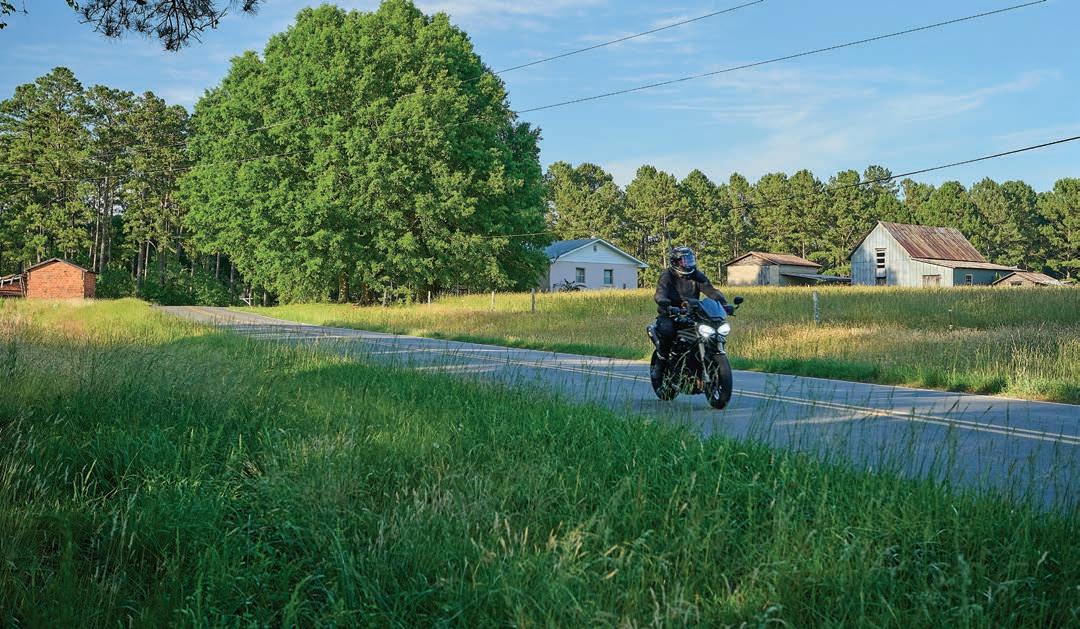
Country Roads, Take Me Home is more than just a song; It’s a right of passage. Tody Goodwin is a road that transports the traveler and clears the head as you ride over rolling hills of smooth asphalt from Wake County into Chatham County.
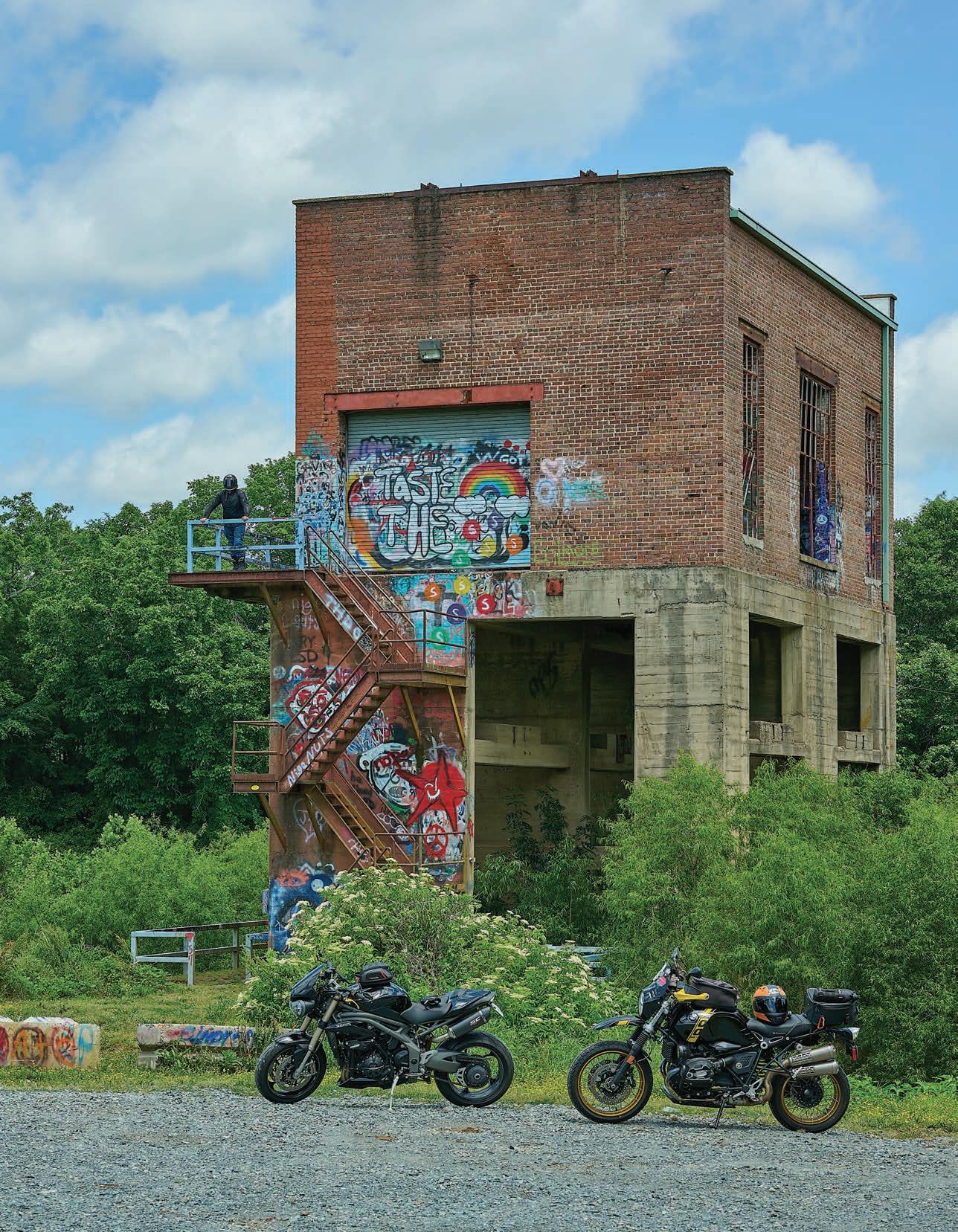
There are in-between landmarks between the in-between towns. The Carbonton Dam, located on the Deep River near Sanford in Chatham County, has a rich history tied to the region’s industrial and environmental past. It was a sight to behold and is open for the public to explore (if you are not afraid of heights).

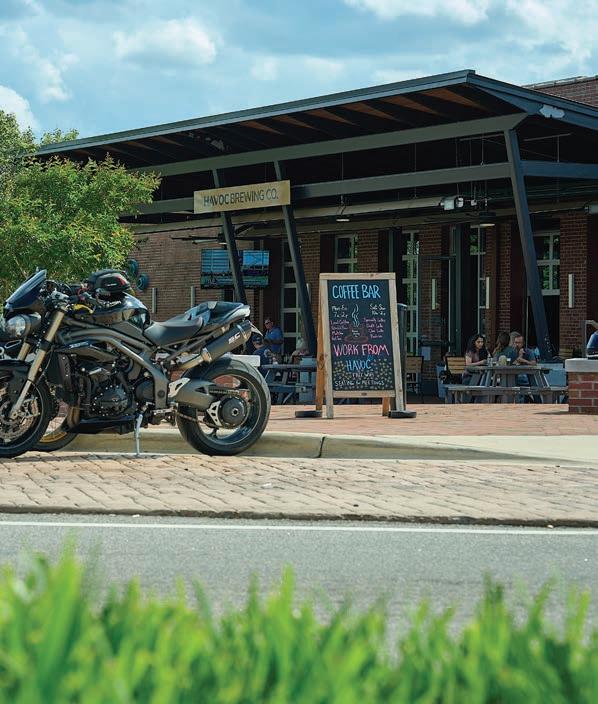
DESTINATION
T he Pik N Pig is a beloved barbecue restaurant in Carthage, known for its hickory-smoked barbecue, slow-cooked over a natural wood fire, which gives the meat a distinctive pink hue and juicy flavor. The restaurant embodies Southern hospitality, with a menu featuring classic pulled pork, brisket, smoked chicken, ribs, and sides like hushpuppies with jalapeño butter, baked beans and coleslaw.
W hat sets the Pik N Pig apart is its location on a small private airstrip, making it a “fly-in” restaurant. Pilots frequently land at the airfield just to dine, with planes taxiing as close as 50 feet from the restaurant’s patio. This aviation connection adds a special vibe, with diners—especially kids—enjoying the sight of small planes landing and taking off. The airfield, designated BQ-1, is home to about 22 aircraft, and the restaurant’s proximity to Pinehurst’s golf scene also draws visitors.
A fter our satisfying meal, one of the servers, who disclosed she had worked as a photographer at the zoo, offered to take our photo by the outdoor model plane. I’m sure she felt right at home having a couple of

monkeys in front of the camera again. Reluctantly, we put on our helmets and gloves and said goodbye to the Pik N Pig, and hello again to the open country roads that led north into Pittsboro. There were several photo-op stops on this leg of the journey; we stopped for one by a fence with yellow wildflowers in the foreground and a tree on a hill in the distance. The sky was spectacular, the kind you rarely see this side of the Mississippi. The picturesque landscape continued, and we were in it. I followed Seth as his route allowed me to relax and take in the scenery more than if I were constantly referring to a screen for navigation; this is another thing I was thankful for.
Before long, we entered Pittsboro from the south and into downtown. We landed at Havoc Brewing Company, which also has a coffee shop providing alternatives to alcohol for journeys such as these. The outdoor patio on the street corner is the best in town for people-watching, as was the neverending flow of roundabout traffic encircling the Chatham County Courthouse. Built in 1881, this iconic brick structure is a focal point of the Pittsboro Historic District, listed on the National Register of Historic Places in 1979. It stands at the intersection of
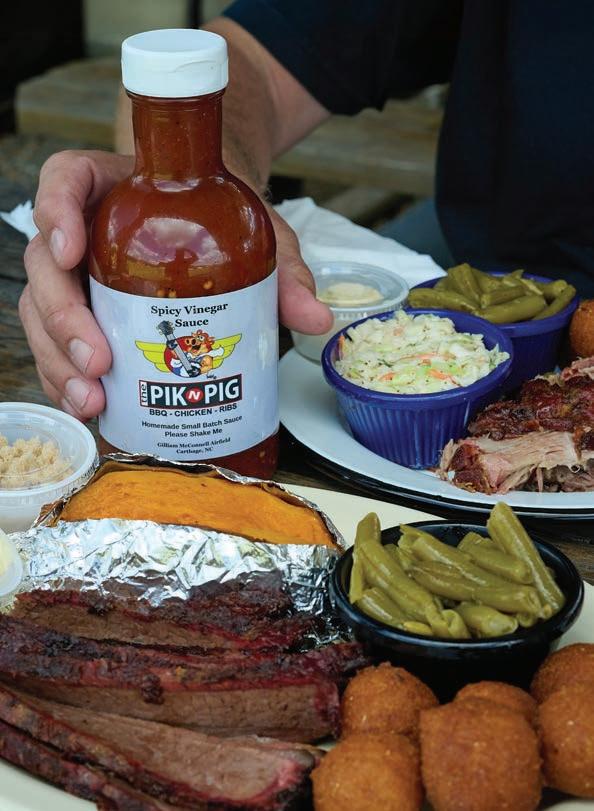
U.S. Hwy 64 Business and U.S. Hwy 15/501, surrounded by the town’s traffic circle, which is often referred to as the “Circle City” roundabout.
DISCOVERY
We peeled out of Pittsboro and back onto Highway 64, eastbound over Jordan Lake, in time to make it home before dark. There were no traffic jams and there was no sun in our faces. Only those growing silhouettes the sun makes when it’s at your back and you’re doing something. It was as if our shadows were the layers of whatever it was we were worrying about before the trip, now being peeled away and sinking back into the darkness of the night. We were thankful for it.
ABOVE: The Pik N Pig is one of those perfect destinations for day trippin’. The family owned “fly-in” restaurant is uniquely set next to the Gilliam-McConnell Airfield and serves up hearty helpings of slow-cooked hickory smoked barbecue.
LEFT: Downtown Pittsboro is a lively historical in-between town offering day trippers a mix of local dining and shopping. We parked our bikes on the bricks between the town’s famous roundabout and Havoc Brewing Company, where we enjoyed iced coffees before returning home on Highway 64.



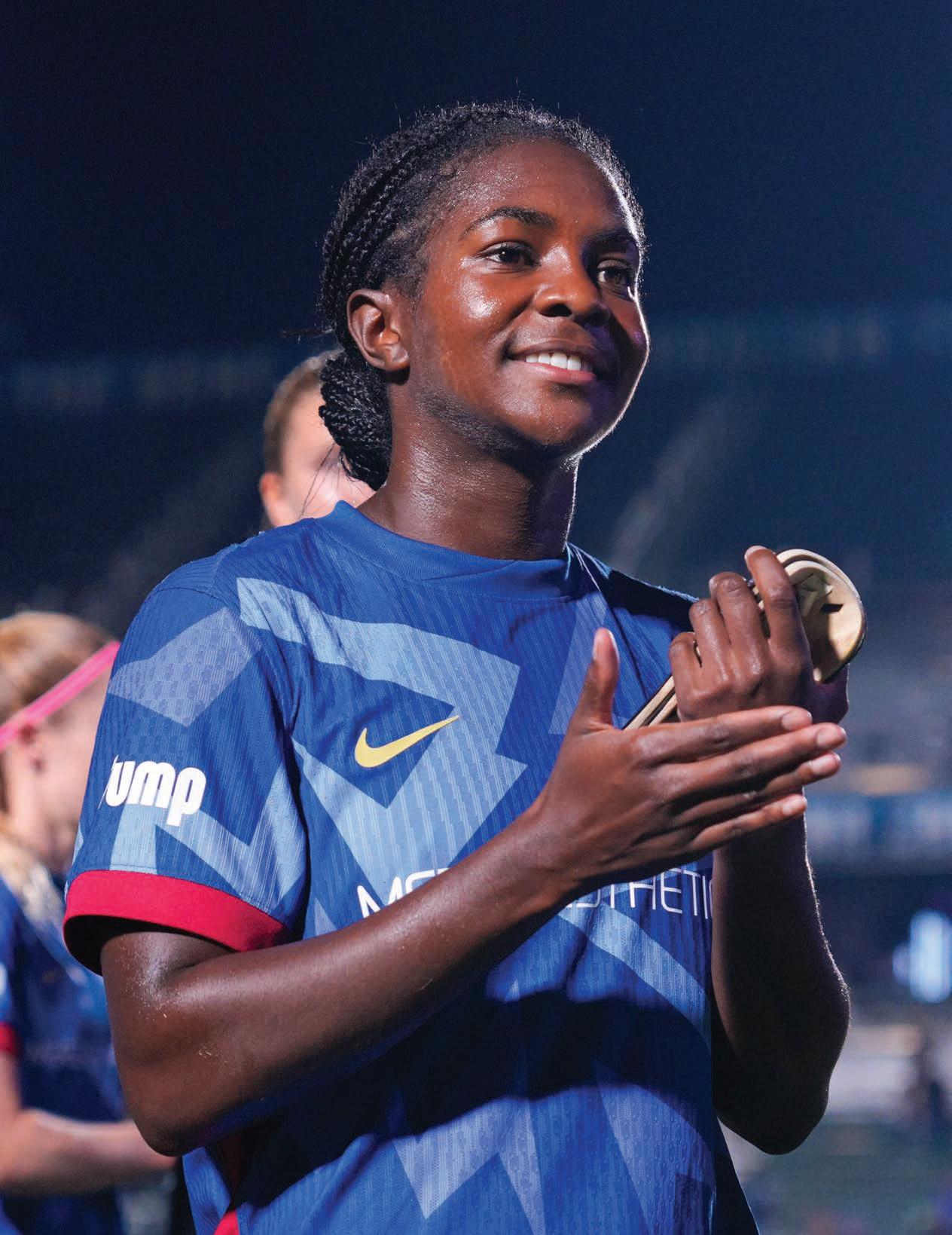
Durham native Brianna Pinto played soccer at UNC–Chapel Hill before playing at the highest level around the world. She is now a superstar midfielder for the NC Courage.

HOME FIELD ADVANTAGE
No matter where soccer takes Brianna Pinto, her world-class game keeps roots in the Triangle
STORY BY KURT DUSTERBERG
Br ianna Pinto is relaxing on a patio that overlooks Cary's WakeMed Soccer Park. The view is expansive enough to take in most of the fields at the park, allowing her to chronicle her career with a sweep of her arm.
“I used to play youth games on Field 8, and I played boys soccer on Fields 6 and 7,” she says. “And on Field 2, that’s where I played my freshman home games for Carolina. We played a national championship game here. My first professional goal was here, too.”
P into is a midfielder with the North Carolina Courage in the National Women’s Soccer League (NWSL), the top level of professional soccer in the United States. It is the crowning achievement of a soccer career that has taken Pinto all over the world, and yet kept her anchored in the Triangle. She grew up in Durham and attended Jordan High School before playing at the University of North Carolina at Chapel Hill. Her pro career began in the NWSL with the New Jersey/New York franchise in 2021, but she was traded to NC Courage at the end of that season.
“It feels like the last 10 years of my life have flown by,” she says, “but I’ve created so many memories along the way.”
For Pinto, soccer has been a way of life for most of her 25 years. As the competition increases, so do the performance expectations and the demands on her time. On this day, she has completed a midday practice with NC Courage, but team meetings await. Later, she is making chicken Parmesan—her go-to meal—for friends at her place.
“ When soccer becomes your job, you have to make meaning of all the other hours in the day,” she says. “It’s up to us to maximize our opportunities to recover and take care of our bodies, and do all the preparation necessary to set ourselves apart. We have a finite amount of time to be an elite athlete.”
Photo courtesy of Lewis GettierNC Courage Communications
P into’s soccer career has been marked by extraordinary achievements, but also by important lessons. She is acutely aware of what she has learned at each step in her journey, even before her teen years. She began fine-tuning her skills with the United States Women’s National Soccer Team (USWNT) program as a 12-year-old. Eventually, she played World Cup matches for the United States U-17 and U-20 teams at the international level.
“ That national team environment taught you to never be complacent, because there’s always somebody who’s kicking at your heels ready to take your spot,” she says. “That’s kind of what it’s like in the NWSL. Yo’’ve got to prove it

every day in training. That’s how you get to your best level.”
P into grew up watching the UNC women’s team practice during the preseason, dreaming of joining the storied program. Despite playing on nationally ranked teams, it was at Chapel Hill that she learned something about disappointment. She scored 31 goals in her three seasons, but her teams weren’t able to deliver a 23rd national championship. She came agonizingly close in 2022, when the Tar Heels lost to UCLA 3-2 in the national title game.
“I’ve gotten over it now, but it took me a while,” she says. “My lifelong dream was to go to Carolina and win national championships. What I learned from that is not everything in life is going to go your way. But it’s ultimately about the process and the journey, and those are some of the best teams I’ve been on in my life. We had such a rich culture because everybody bought into becoming better every day.”
Even the pro game has delivered some difficult moments. Last year, Pinto missed three months with a torn MCL. “Injuries teach you a lot about how much you love the game and how much you’re willing to do to get back to the level you’re at. I would argue that I’m playing better now because I was so hungry to get back to the field, and I was missing being part of the team environment.”
A s an athlete, Pinto had a running start. Her father, Hassan, played soccer at UNC, while her mother, Maleata, played softball at the school. They encouraged Brianna and her brothers, Hassan Jr. and Malik, to find a sport they loved. At the age of two, Brianna was inspired by Hassan Jr. and his team of five-year-olds and
asked her dad to play soccer. When she turned four, her father enrolled her on a co-ed team with Rainbow Soccer in Chapel Hill. In her first game, a boy dribbled past her and scored. Twice. What happened next is part of the Pinto family lore.
“ The third time the boy came down, Brianna stuck her leg out, took it, dribbled through everybody and scored a goal,” her father says. “The game ended 5–3 because Brianna scored all five goals. At the end of the game, I asked her, ‘Who taught you that?’ She said, ‘I’ve been watching you guys. I told you I wanted to play.'”
A s the years passed, Brianna frequently watched her father participate in a UNC soccer tradition called “noon ball,” a pickup game with UNC coaches and former players. “I watched how he went about attacking and dribbling, and how he would shoot the ball,” she says. By the time she reached middle school, she was good enough to participate.
T he joyful memories kept coming. When any of the Pinto kids scored a goal, the whole family went out for ice cream. Sometimes there were bigger incentives, like the time her parents offered Brianna an iPod Nano if she could score eight goals for her U10 team during a fourgame tournament in Charlotte. “Of course, I was motivated,” she says with a smile. “I scored eight goals, we won the championship. To this day, I still have the iPod Nano. It’s a reminder that if you set your mind to something, you can achieve it.”
Now in her fifth pro season, Pinto hopes she is in the prime of her career. “You want to elongate your time as a professional athlete,” she says. “It’s what you’ve been
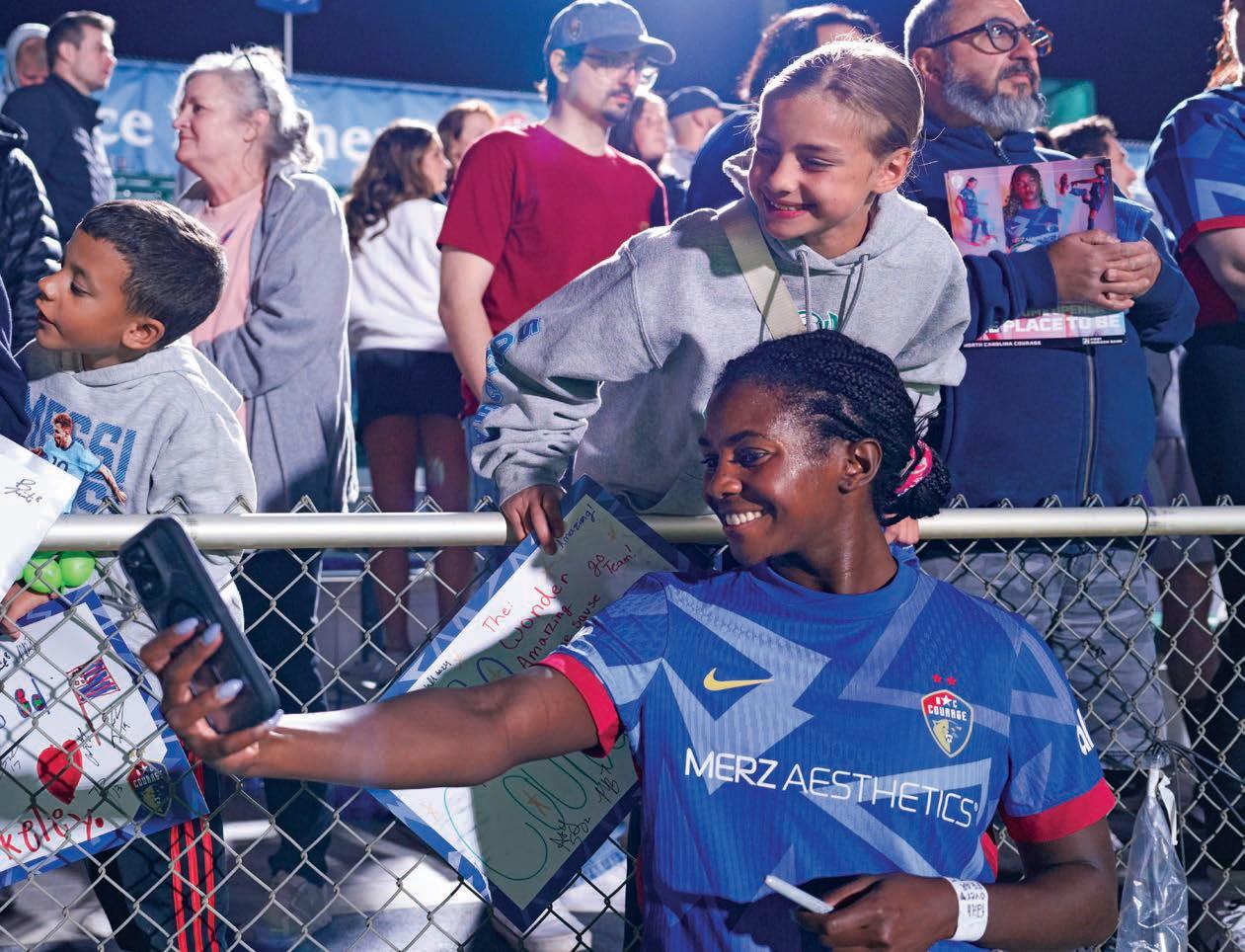
dreaming of your entire life.” At the same time, she already sees a path for life after her playing days. At age 17, she spoke before the sport’s governing body at the 68th International Association Football Federation (FIFA) Congress, helping present North America’s successful bid to host the 2026 World Cup. She also holds a seat on the U.S. Soccer Federation’s Athletes’ Council.
I n the meantime, she has begun growing the game on her home turf. The Pinto Futbol Foundation works to make the game affordable for kids in Durham and Chapel Hill. Not surprisingly, it is a family affair. Hassan Jr. played professionally for
the Richmond Kickers, and younger brother Malik currently plays professionally in Colorado.
“I was very fortunate that I had family members that could help me get to training every day and buy my uniforms,” Pinto says. “That’s not feasible for a lot of families. We’re just trying to plant a seed and introduce kids from underserved communities to the sport. Hopefully they will fall in love with it, and then we will push them toward regular programming.”
A t the camps, kids get plenty of soccer instruction, but they also learn about the importance of education. All five members of the
Pinto family were student-athletes at the Division I level. “You can use sports as a vehicle to open educational opportunities,” she says. “That sets you up for a lifetime of success well after your playing days are over.”
ABOVE: A big part of the Courage culture is how much time they spend with their supporters. Here, Pinto takes a selfie with a young fan. Photo courtesy of Lewis GettierNC Courage Communications.
OPPOSITE PAGE: Brianna grew up in a sport-loveing household and took to soccer by the age of four, where she was running circles around the boys on her co-ed team.
courtesy of Brianna Pinto.
Photo
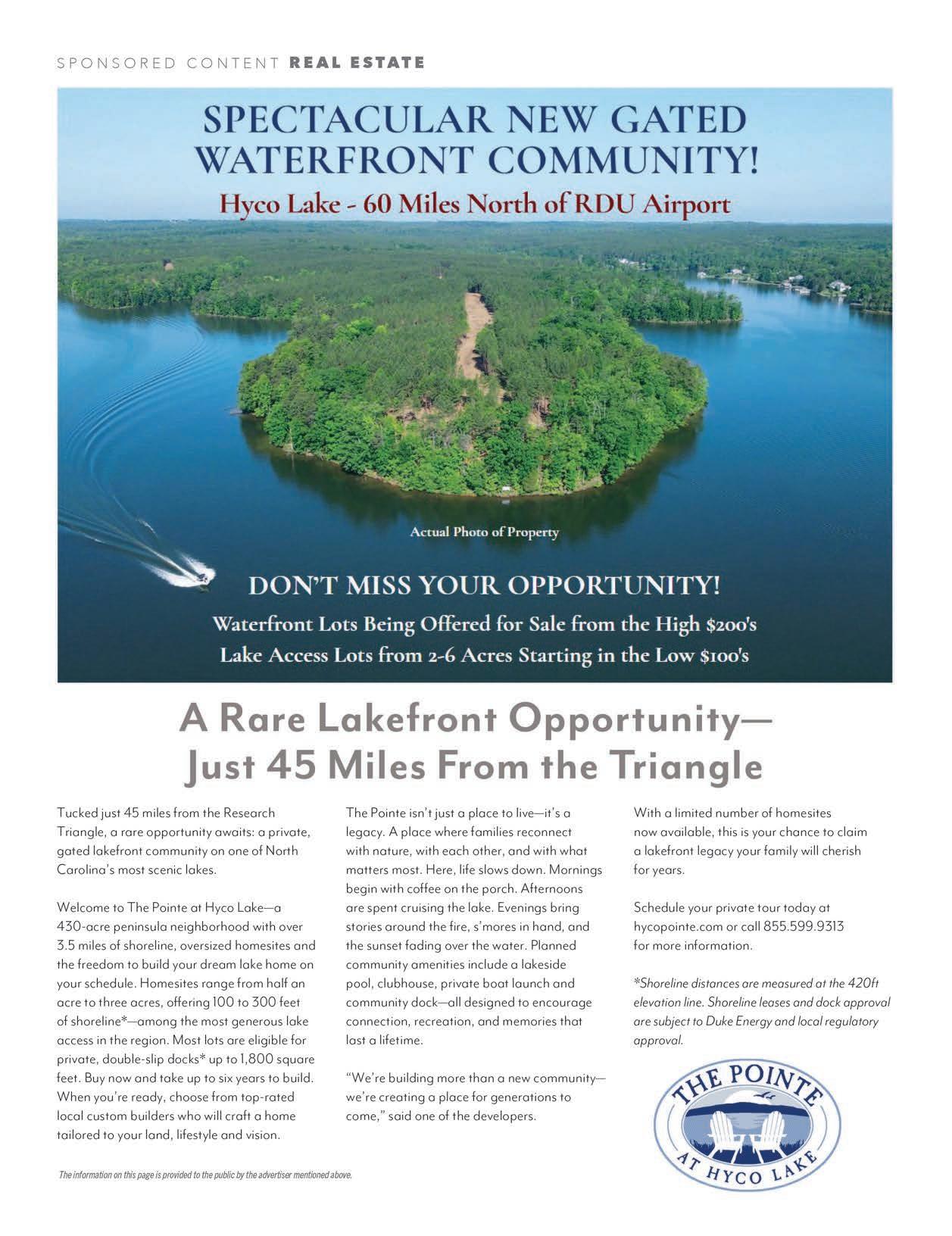



Raleigh skyline at twilight by
- SeanPavonePhoto Oak leaf image by
- domnitsky.
So you’ve landed in the Triangle—welcome! Whether you came for the career opportunities, the incredible food scene, top-tier universities or simply a better pace of life, you’ve landed somewhere special. Anchored by Raleigh, Durham and Chapel Hill, the Triangle is one of the fastest-growing and most vibrant regions in the country. From biotech to barbecue, there’s something here for everyone.
Here’s a guide to help you find your footing—and feel right at home.
NEW RESIDENT ESSENTIALS
First things first, get all the boring stuff out of the way so you can breathe easy.
• DMV and Driver’s License: Visit ncdot.gov/dmv for information about transferring your license and vehicle registration and getting a NC REAL ID. Pro tip: Make an appointment early!
• Electricity: duke-energy.com
• Water and Trash: Varies by city. Start at raleighnc.gov
• Internet: Spectrum, AT&T Fiber, Google Fiber, T-Mobile and more
• Voter Registration: Head to ncsbe.gov to register online or update your address
OTHER KEY RESOURCES
• City of Raleigh: raleighnc.gov
• Wake County: wake.gov
• GoTriangle Transit Info: gotriangle.org
• Emergency Services: Dial 911 for emergencies. For nonemergency help in Raleigh, call 919.831.6311.
GET TO KNOW THE TRIANGLE
North Carolina is divided into three geographic regions: the Mountains, the Piedmont and the Coast. You’re now in the Piedmont—the state’s heartland. And right in the center of it all is Raleigh, the state capital, where historical charm and modern innovation live side by side.
Together with Durham and Chapel Hill, Raleigh forms the Research Triangle. It’s named after Research Triangle Park (RTP), a 7,000-acre hub for tech, health care and innovation that draws talent from area powerhouses: North Carolina State University, Duke University and the University of North Carolina. With over 1.6 million people in Wake County alone, the Triangle continues to boom with newcomers, young families, students and retirees alike.
SEASONS AND SOUTHERN COMFORT
One of the first things new arrivals notice? We get all four seasons. Spring bursts onto the scene with azaleas, dogwoods and a whole lot of pollen—we are the City of Oaks, after all. Summer is hot and humid but perfect for day trips to the pool, local lakes or beaches. Fall brings crisp nights, pumpkin patches and football. And winters? Mild, with maybe one or two snow days (cue the bread-and-milk runs).
HIKING TRAILS
The weather keeps things interesting—but it also makes the Triangle ideal for year-round outdoor living. Popular hiking spots include William B. Umstead State Park in Raleigh, Eno River State Park in Durham and the extensive American Tobacco Trail, which stretches 22 miles across the region. For familyfriendly outings, Lake Johnson and Shelley Lake offer paved loops, scenic overlooks and kayak rentals. It’s easy to enjoy nature without leaving the city limits.
A cherished asset in the area is the expansive greenway system. With more than 100 miles of scenic, interconnected trails, Raleigh’s greenways link to neighboring systems throughout the Triangle, offering bikers, walkers and runners a beautiful, car-free way to explore the region—from one end to the other.
GETTING AROUND
If you’re new to driving here, here’s a quick road map:
• I-40 runs east-west across the Triangle and connects Raleigh to Durham and Chapel Hill
• I-440 (the Beltline) loops around central Raleigh
• I-540 is the newer, outer loop—some parts require tolls
• Glenwood Avenue, Capital Boulevard, New Bern Avenue and Fayetteville Street are Raleigh’s main arteries
Traffic can get congested at peak times, but the area is increasingly bike- and pedestrian-friendly. GoRaleigh and GoTriangle provide public transit across cities and towns.
SHOPPING
Looking for something to do between unpacking boxes? Start here:
• North Hills: Trendy shops, restaurants, and Raleigh’s beloved indie bookstore, Quail Ridge Books
• Fenton (Cary): Chic new development with high-end retail and dining
• Village District: Classic shopping in a nostalgic setting, walkable and full of character
• Brier Creek Commons: Big-box convenience meets local flair
• Lafayette Village: Centered around a Europeaninspired courtyard with dining and events
• Crabtree: Classic indoor mall with big-name department stores and local shops
DINING
The Triangle’s food scene is as diverse as its population. From James Beard Award–nominated chefs to hole-inthe-wall gems, you’ll find bold flavors in every corner. Raleigh offers upscale bites in North Hills and along Glenwood South, while Durham’s downtown dining scene thrives with creative, chef-driven concepts. Cary and Chapel Hill boast growing international food scenes—perfect for global cuisine lovers. Whether you’re into vegan comfort food, smoky Carolina barbecue or locally sourced fine dining, you’ll quickly find your go-to favorites.
COMMUNITY AND CULTURE
The Triangle thrives on connection. Whether it’s neighborhood block parties, downtown art walks or world-class festivals, there’s always something happening. Want to get involved or give back? Organizations like the YMCA of the Triangle, NC Harm Reduction Coalition and dozens of local rescue groups make it easy to plug into your passions.

SPORTS ALLEGIANCES
Sports fans will feel right at home in the Triangle, where college rivalries run deep and the pro teams know how to draw a crowd. Catch the NHL’s Carolina Hurricanes at the Lenovo Center, cheer on the Durham Bulls at their downtown ballpark or support the NC Courage and North Carolina FC at WakeMed Soccer Park in Cary.
One unspoken rule of local life? You have to choose a side—at least when it comes to college basketball. You’ll soon find out whether your neighbors bleed Carolina blue, Duke blue, or NC State red. Pro tip: If you're in Raleigh, you’re in Wolfpack territory!
FAIRS AND FESTIVALS
The Triangle keeps the calendar packed with celebrations of art, music, food and culture. Raleigh Wide Open (previously IBMA World of Bluegrass) and Hopscotch Music Festival bring national attention, while events like Durham’s CenterFest and Cary’s Lazy Daze Arts & Crafts Festival highlight regional talent and community spirit. Seasonal favorites like the North Carolina State Fair and Apex’s PeakFest offer classic fun, from deep-fried treats to carnival rides. No matter your interests, there’s a festival for it here.
MUSEUMS
This region is a treasure trove for lifelong learners and curious minds. Families flock to Raleigh’s Marbles Kids Museum and the North Carolina Museum of Natural Sciences, while art lovers explore the stunning outdoor trails and galleries at the North Carolina Museum of Art. In Durham, the Museum of Life & Science offers hands-on science and nature exhibits, and Chapel Hill’s Ackland Art Museum connects the community with global collections. Admission is often free or low-cost, making culture easy to access.
GO-PLAY-SEE
One of the best parts of living here? You’re just a road trip away from some of the best vacation sports. Here’s a quick cheat sheet:
• Wilmington – 2 hours: Coastal vibes and boardwalk fun
• Wrightsville Beach – 2 hours: Sand, surf and seafood
• Charlotte – 2.5 hours: Urban bustle and major league sports
• New Bern – 2.5 hours: Riverfront town with rich history
• Atlantic Beach/Morehead City – 3 hours: Great for fishing and family trips
• Blowing Rock – 3.5 hours: Grandfather Mountain, Tweetsie Railroad and spas
• Asheville – 4.5 hours: Blue Ridge Mountains, breweries and Biltmore
WELCOME TO THE NEIGHBORHOOD
Moving to a new place can feel overwhelming, but the Triangle makes it easy to feel at home. Whether you’re catching a Durham Bulls game, hiking at William B. Umstead State Park or finding your new go-to coffee shop, there’s something here for everyone.
Welcome to the neighborhood. We’re glad you’re here. For a more extensive list of resources, check out our online guide: midtownmag.com/the-newcomersguide-to-raleigh




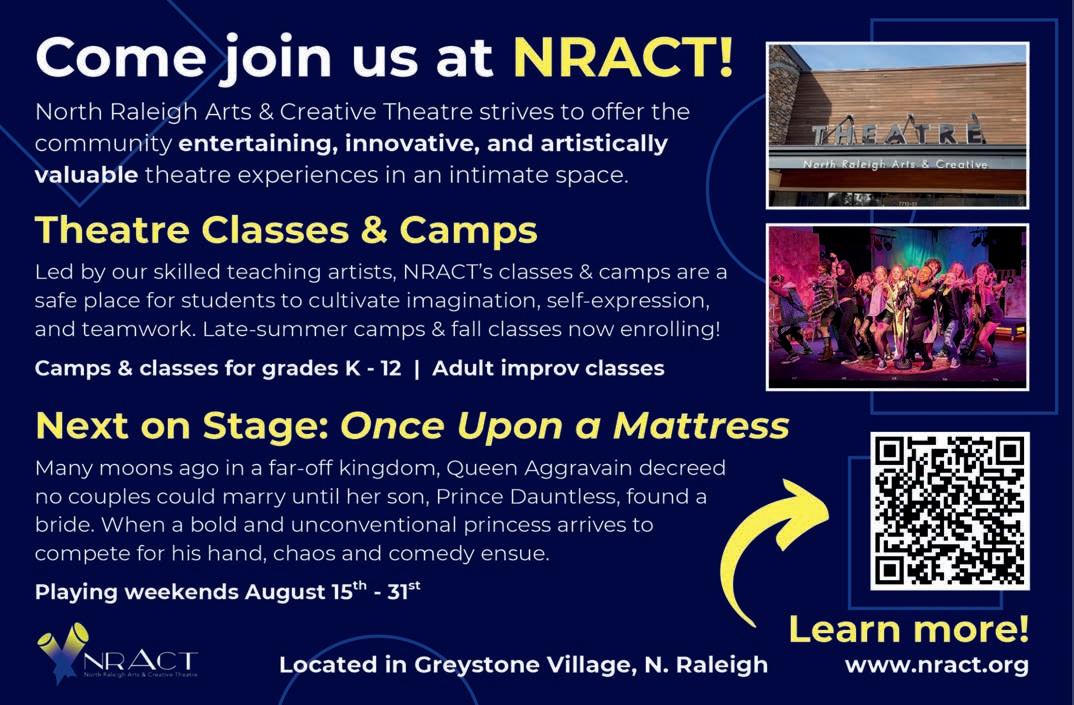

EDUCATION GUIDE
PREPARE FOR THE FUTURE
Explore this guide to learn more about the education resources available here in Wake County.
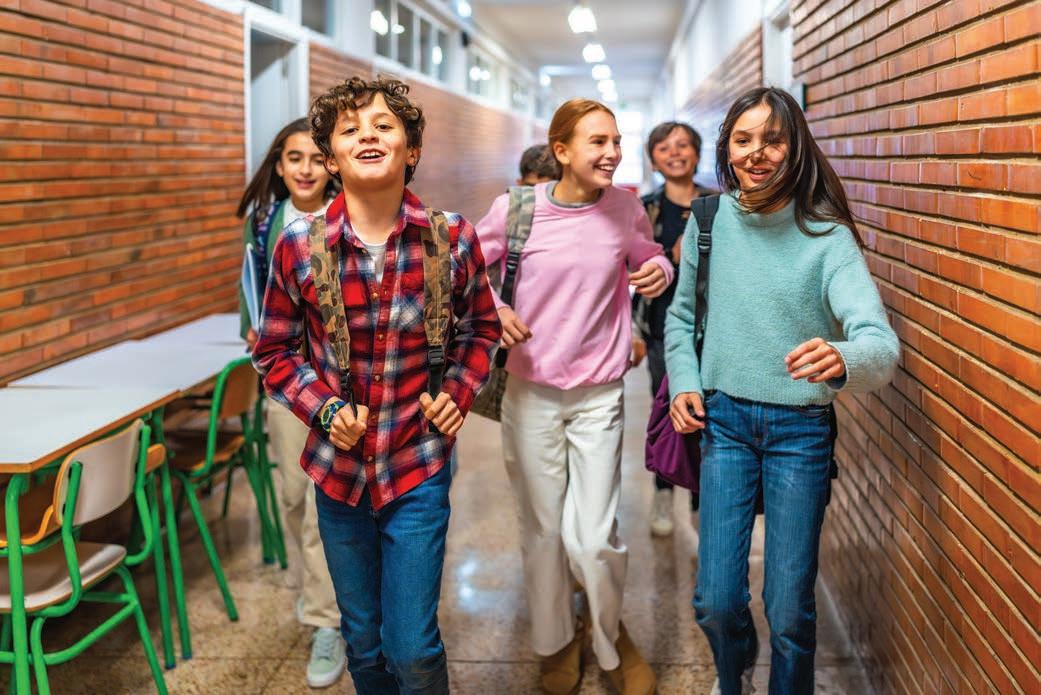
EDUCATION GUIDE
BY KYLE MARIE MCMAHON
If you’ve recently moved to the Raleigh area and are navigating school choices for your child, you’re not alone—and you’ve landed in one of the state’s most dynamic educational communities. With more than 160,000 students, Wake County Public School System (WCPSS) is the largest in North Carolina, serving a region rich in resources and innovation. But all those choices can be overwhelming. That’s where this guide comes in.
Public School Options
Families in Raleigh will be zoned for a WCPSS school. Students are assigned to a “base school” based on their address. If you’re happy with that assignment—great. If not, you may have options.
Some schools follow a traditional calendar, while others are on year-round or modified calendars. Depending on your child’s base assignment, you may be eligible to switch calendars by applying for a calendar option school.
You can also apply for a magnet school, which offers specialized programs ranging from international baccalaureate and language immersion to gifted and talented curriculums and STEM. Magnet seats are filled through a lottery system based on several factors, including your address and the school’s capacity.
WCPSS also offers several early college options that allow high school students to earn college credit tuition-free while still enrolled in high school. These schools partner with Wake Technical Community College or North Carolina State University.
Calendars in Wake County
Wake County public schools run on three main calendars: Traditional: Long summer break with shorter seasonal breaks Modified: Shorter summer break with more frequent breaks throughout the year
Year-Round: Operates on four rotating tracks with three-week breaks between sessions
Magnet Schools: A Closer Look
Wake County’s award-winning magnet programs offer themed curriculums that give students access to unique learning experiences—whether that’s learning in a second language, creating digital media projects or diving into environmental science.
Magnet school themes include:
• Arts Plus
• Gifted and Talented
• International Baccalaureate (IB)
• Language Immersion / Global Studies
• STEM (science, technology, engineering and math)
• Leadership / Innovation
Each theme is offered at different schools and grade levels. Students do not need to be labeled “gifted” to apply for these programs.
Charter and Private Schools
In addition to public school options, Wake County is home to nearly 40 charter schools and more than 100 private schools. Charter schools are public, tuition-free and independently run. Admission is lottery-based and open to all North Carolina residents.
Private schools vary widely in size, philosophy and tuition. Some are faith-based, others are Montessori or arts-focused.
While they don’t follow the state curriculum, they do meet attendance and academic benchmarks to satisfy state requirements.
Homeschooling
Wake County has a robust homeschooling community supported by co-ops, local events and extracurricular opportunities. The North Carolina Division of Non-Public Education oversees registration and reporting requirements.
Early Colleges: A Head Start
Want to graduate high school with two years of college already done? Early college programs partner with Wake Tech or NC State to allow students to earn dual credit toward both a high school diploma and an associate’s degree. These programs are free, competitive, and a great fit for motivated students. Early college schools follow their college partner’s calendar instead of a WCPSS calendar option.
Choosing the Right Fit
It may take time to decide what school environment is best for your child. Visit schools, ask questions and speak to parents. Start with the Wake County Public School System’s Assignment & Enrollment portal at wcpss.net. And remember—every family’s journey looks different.
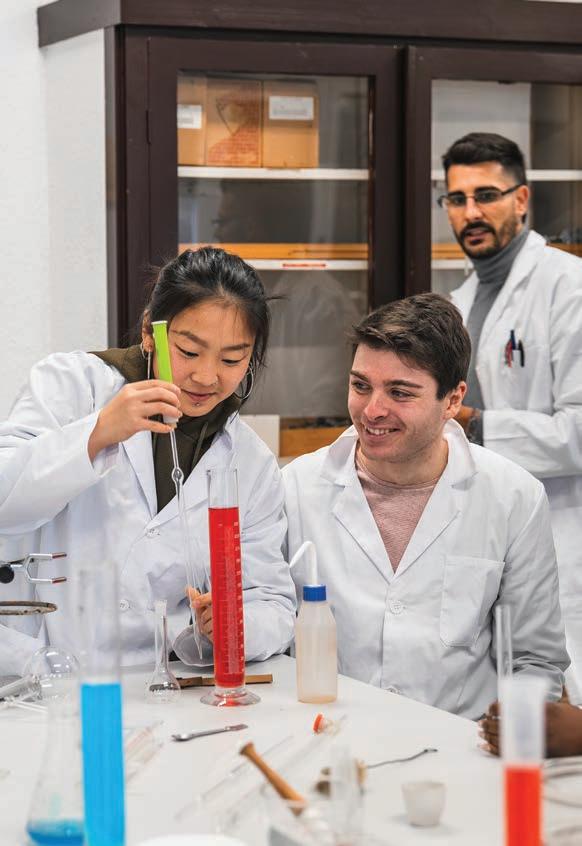


From classes in STEM to private schools and international baccalaureate, Wake County has it all for all ages. Photos by Stock. Adobe.com—Daisy Daisy and Seventyfour.
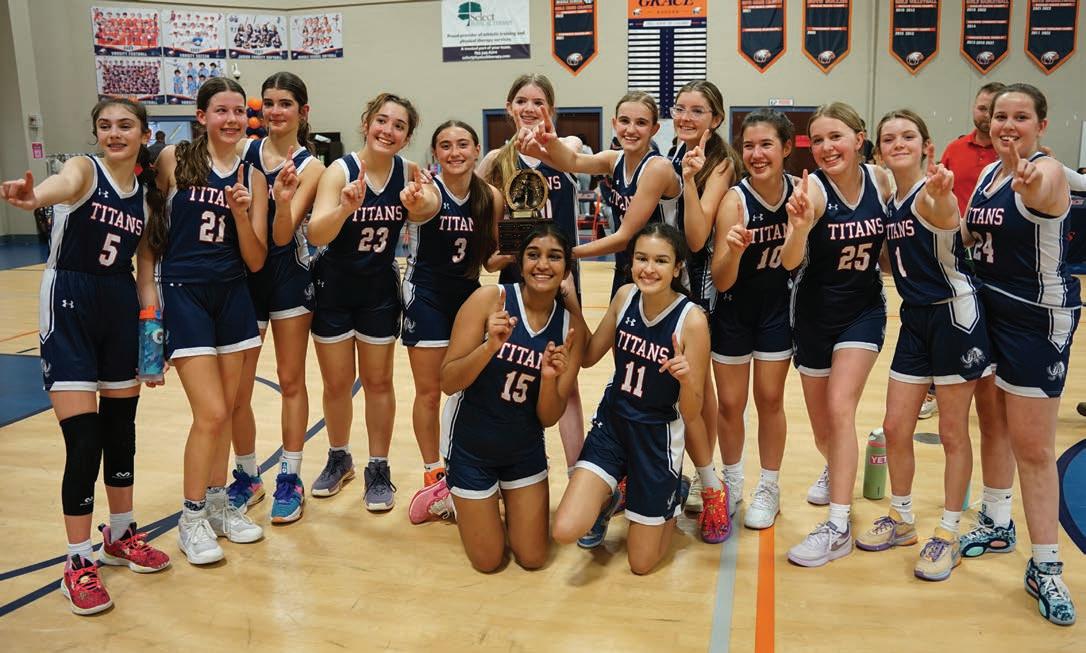
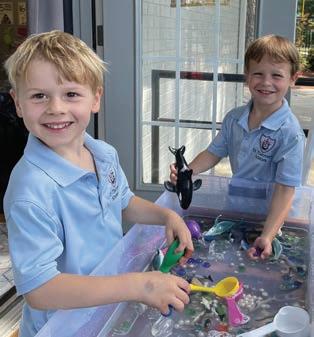
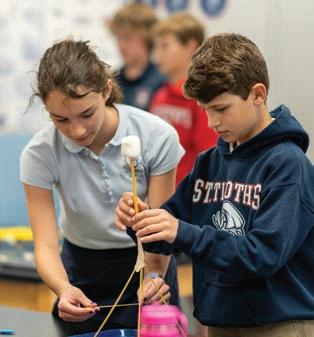

ST. TIMOTHY’S SCHOOL PREPARES STUDENTS FOR A LIFETIME OF LEARNING
At St. Timothy's School, we believe a life of integrity, service and purpose is built through everyday moments. We intentionally educate in every interaction—whether it's a thoughtprovoking discussion in language arts, a new art technique or a hard-fought game. We value every chance for students to show compassion, solve problems creatively, learn with faith and reason, and build confidence. We believe in building a strong, lasting foundation with each student, knowing that It All Starts Here.

STATS:
• 585 Students
• Grades Pre-K–3 | Max class size 18
• Grades 4–8 | Max class size 20
• Weekly Chapel
• PE and Recess
• Athletics Grades 6–8 | 20+ Sports
• Visual and Performing Arts
• Technology and Design
• Regional and International Education Trips
• Social and Emotional Learning
• After-School Care Program
• Summer and School Break Camps
• Service and Leadership Opportunities
• Robust and Active Community

TRINITY ACADEMY
CULTIVATING SOULS TO LOVE THE TRUE, THE GOOD AND THE BEAUTIFUL
At Trinity Academy, we seek to glorify God through Christ-centered classical education. Knowing Christ as the One in whom “all things hold together” (Colossians 1:17) emboldens us to investigate history, literature, philosophy, science, theology and mathematics as potential expressions of worship that are as varied as they are unified. We joyfully pursue our mission to equip students to live with wisdom, excellence and purpose in the modern world by offering an education grounded in the Christian faith and the classical tradition.
Trinity Academy is a training ground where future researchers, government officials and business leaders are learning to integrate their thoughtful
Christian worldview with their aspirations. Our community is unified as we prepare young people to be lifelong learners who can evaluate life with precision because they live with conviction. In partnership with parents, students, faculty and churches, we will deliver the very best education possible: a classical, Christcentered education that highlights the true, the good and the beautiful.
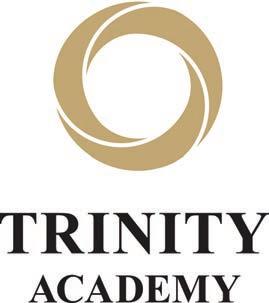


CHESTERBROOK

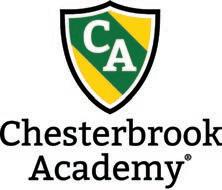
THE MONTESSORI SCHOOL OF RALEIGH (MSR) AND CAROLINA PREPARATORY ACADEMY (CPA)
Offering accredited Montessori education to ages 15 months–grade 6, MSR encourages curiosity and discovery through both guided and selfdirected learning. With over 50 years of excellence, MSR inspires agile thinkers, poised communicators, and gracious collaborators who have a lifelong love of learning.
Leading the way in global education, CPA is the only independent school in North Carolina that offers the grade 6–12 International Baccalaureate (IB) continuum. Through rigorous interdisciplinary academics, college preparedness, a robust environmental studies program and local to global community-service projects and trips, our students develop into responsible, knowledgeable and kind citizens leading fulfilling lives in college and beyond.
Chesterbrook Academy Preschool in Raleigh offers high-quality early childhood education for children ages 6 weeks to Pre-K in the Millbrook, Northeast Raleigh, Shamrock Meadows and Cedar Hill Estates communities. Our nurturing environment, supportive teachers and personalized approach foster each child’s growth based on their interests, learning styles and abilities. Through our proprietary Links to Learning curriculum, we inspire curiosity, confidence and independence, helping to build a strong foundation for academic success. We also offer convenient hours, including part-time options, sibling discounts and CCA/GSA military family assistance. Contact us today to schedule a tour!
2215 W. Millbrook Road, Raleigh | 877.959.4181 raleigh.chesterbrookacademy.com

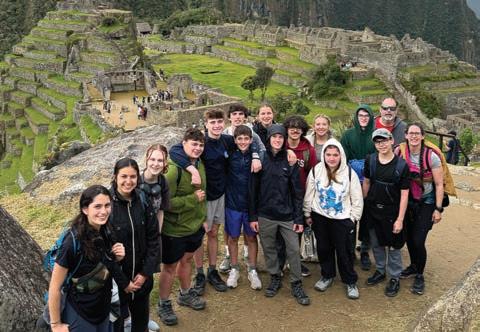
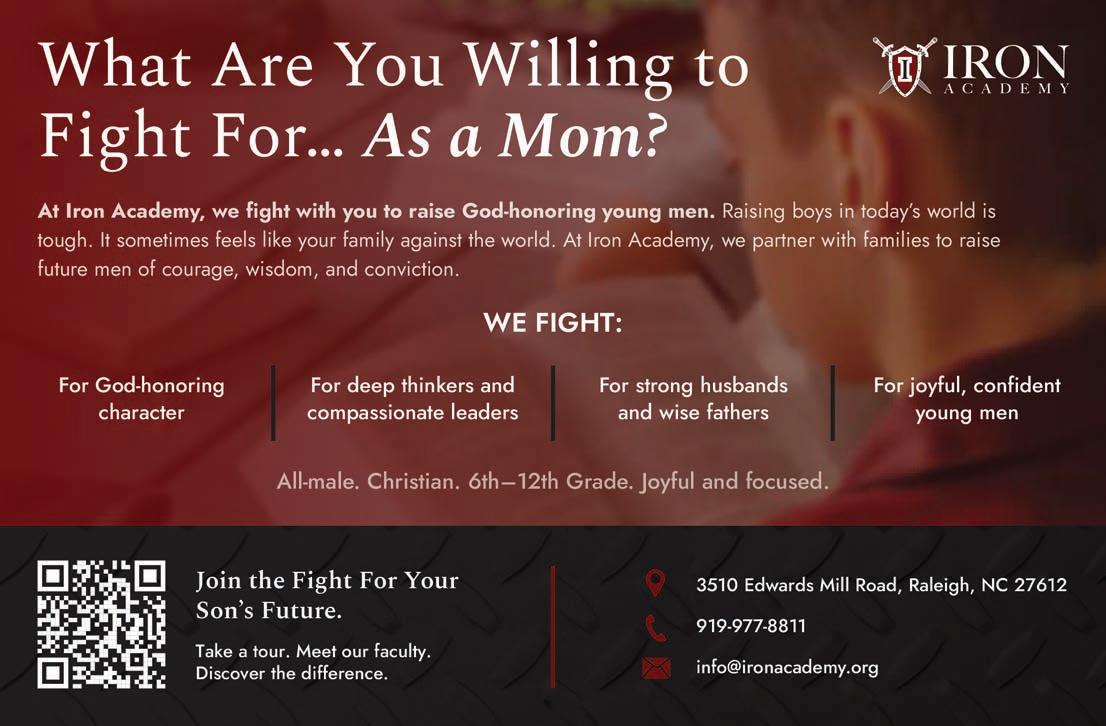





TrenLend offers curated fashion through a luxury rental experience
BY SOFIA LUJAN STYLING | PHOTOS BY JESSICA BRATTON
In a fashion world often dominated by fast trends and steep price tags, two North Carolina State University graduates are changing the way Triangle women approach style. Emmy Weiland and Amelia Zahn, both 23, are the founders of TrenLend—a boutique dress rental service with storefronts in Cary and Raleigh’s North Hills, plus a growing online presence. Their mission? To make high-end fashion more accessible, sustainable and confidence-boosting. What began as a side hustle in their college house has quickly become a polished brand with racks full of designer looks and a loyal customer base. We spoke with Emmy and Amelia to learn more about how their friendship turned into a full-fledged business and what inspires their vision for TrenLend’s future.


How did you two meet?
EMMY: The summer before our sophomore year of college, our friends Nic and Connor introduced me to Amelia. We started hanging out and have been best friends ever since!
I know you are recent graduates of NC State. Can you tell me what you studied, and if it didn’t relate to business or fashion, how do you feel you are able to apply it to this?
A MELIA: We both graduated with our BS in business administration with a concentration in marketing from NC State.
EMMY: I also earned a minor in arts entrepreneurship, which helped me
develop a creative mindset alongside my business skills
Are you from the Triangle area? If so, can you tell me a bit about growing up here and what it means to have a successful business in the area? If not, what made you want to stay here after college and keep the physical stores in the area?
A MELIA: Yes! I was born and raised in Cary, and graduated from Cardinal Gibbons High School in 2020. I chose to attend NC State for college, though I was initially hesitant to stay in the Triangle since I had lived here my entire life. Looking back, it was one of the best decisions I’ve made. Both growing up in this
area and being part of the NC State community have given me a deep sense of connection and support. That foundation made it incredibly meaningful and ultimately rewarding to open our first storefronts here. The Triangle has truly felt like the right place to grow both personally and professionally.
EMMY: I’m originally from High Point, but by the time I graduated we had already opened our first store, so staying in the area was an easy decision. I truly love living in Raleigh and won’t be leaving anytime soon!
Have you always had an interest in fashion?
A MELIA: My passion for fashion really began during college. It was
the first time I truly experienced how people use clothing as a form of self-expression. Attending numerous events and having the chance to dress in ways that made me feel confident was a transformative experience. However, I quickly realized that quality fashion can often be expensive. That inspired Emmy and I to create a solution that makes fashion more accessible and affordable, allowing women to feel comfortable and confident in what they wear every day. Through building TrenLend, we’ve fully immersed ourselves in the fashion industry and have developed a deep appreciation for it.
Describe how this idea came about. I know you both were disappointed with similar rental businesses, but how did it go from that initial disappointment to a full-fledged business?
EMMY: Amelia first approached me with the idea of renting out our personal dresses to make a little extra money on the side. We started out as The College Closet, inviting girls to our college house where they’d try on dresses in our spare bedrooms. Through this, we realized how much people loved being able to try things on before renting—something we had always wished for ourselves after frustrating experiences with other rental companies. The concept just clicked. With the support of our families and a genuine passion for what we were building, we took the leap and officially launched our business as TrenLend. Instead of just renting out personal dresses, we started working directly with designers to build a diverse and growing collection with a wide range of sizes, styles and price points. This helps us offer an inclusive and
thoughtful rental experience, so every customer who walks into our store or shops online can find something that works for them. Do you find most people take advantage of your storefronts so they can try on the dresses beforehand, or is most of your business online?
EMMY: Definitely! Most of our customers love the in-store experience and take full advantage of being able to try things on before renting, it’s a huge part of what makes TrenLend special. We’ve even had customers travel from out of state just to visit our stores and try on a range of our styles, so they know exactly what they like when placing future online orders. That said, our online business has really taken off this year and we’ve already shipped to almost all 50 states, which is so exciting to see!
How long did it take for the business to get up and running?
A MELIA: It took us about six months from the initial idea to launching TrenLend on social media in early 2023. From there things moved quickly. By August 2023, we officially opened our first storefront in Cary. Exactly one year later, in August 2024, we expanded with a second location in North Hills!
What is your approach to the clothing you choose to stock? Do you get requests for certain designers?
EMMY: Our approach to selecting clothing is all about offering pieces that feel special, unique and truly flattering for a wide variety of ages and body types. From casual daytime attire to elegant options for black-tie events, we aim to provide wardrobe solutions for every occasion. We deeply value the




relationships we have with our brands and are continuously working to expand our brand offerings for our customers. Additionally, we love getting feedback from our customers on what brands they would like to see in store and always try our best to research each brand and see if it would be a good fit for our model. What plans do you have for the future?
A MELIA: TrenLend today looks quite different from our original vision, which is one of the most exciting aspects of our journey. The business is continually evolving, and while the future remains uncertain, our commitment is clear: to provide an affordable, accessible and
sustainable approach to fashion for our customers and community. We have plans to expand both our physical storefronts and our online offerings. Each day brings new challenges and opportunities, especially in the rapidly evolving clothing rental industry. Our goal is to remain adaptable and pursue steady growth. At the core of our success will be broadening our product offerings to appeal to a wider audience while refining our processes to make the rental experience as seamless and convenient as possible. Staying true to our company values and focusing on delivering an exceptional customer experience will be essential to our continued growth.
Amelia and Emmy came up with their business idea in college, starting with renting out their personal dresses. The idea soon evolved into a successful business, where customers can rent high-end dresses such as these Nicholas dresses (Micah in Luna Ivory, left, and Melody in Lenia Butter, right), modeled by Amelia and Emmy.



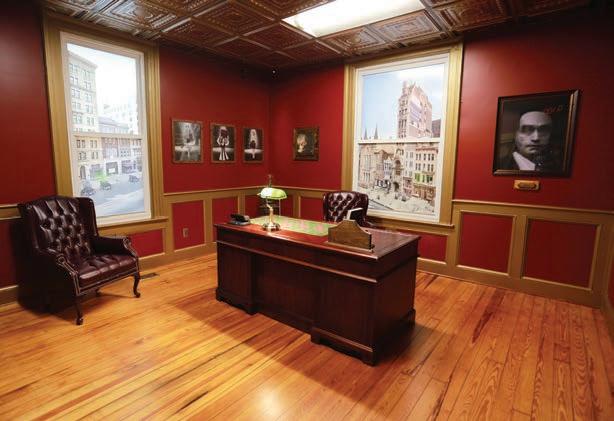
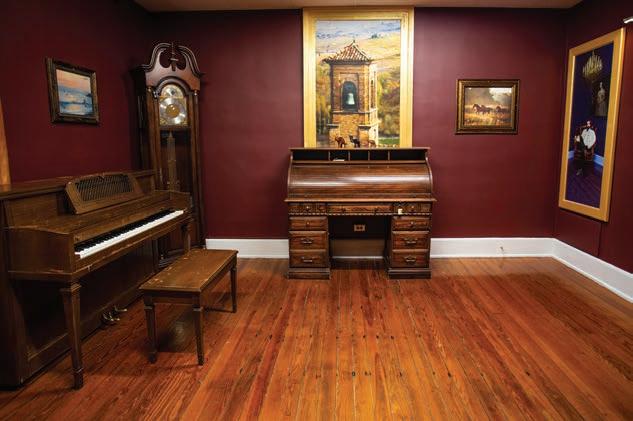
DARE TO ESCAPE FROM IMMERSIVE ROOMS
STORY BY MARIO BOUCHER
Confined to the small, dingy room with its filthylooking walls, Kyle turned to me and asked, “How are we going to get out of here?”
I looked at my son and smiled. “We just follow the clues to break into the maintenance room and, from there, get in the guard’s office, grab the codes and escape this prison.”
And we did, just within the time limit. During another visit we managed to hunt down Dracula. Not bad for just the two of us, considering that many attempt this with four to six people.
Not to worry though—we weren’t actually in prison, but rather working our way out of the “Prison Break” room at Nerd Escape Room in downtown Raleigh. “Dracula” is another room with an appropriate, spooky (but not scary) environment. The settings look so real, you feel like you are in the game. But that’s the idea. It is immersive and fun to play together.
Stepping back and looking around a room lets you see how things are connected in order to solve the clues. Some may be obvious. Others, you have to look a little harder. Anybody who loves puzzles can play. But fair warning: You only have an hour to escape your dilemma. If you find yourself stuck, one of the crew members can give you a hint. All you have to do is wave at the camera.
“On our end, we watch as people go through the rooms,” says manager Joseph Vuke. “We have a top-end view, so we
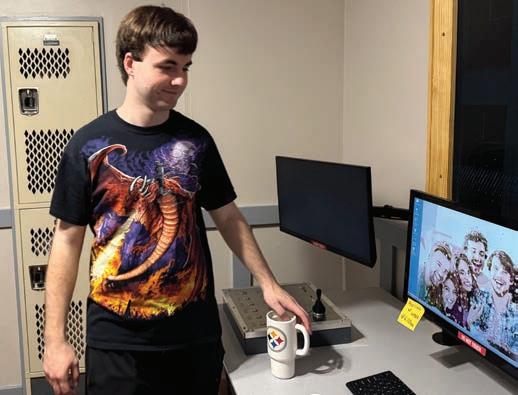
can tell where a group is in a room and at what point they are in the story. It’s really cool to see people find the thread and be part of solving a puzzle to advance to the next room.”
Founders Andrew Butenko, who holds a master’s degree in international law, and Yury Kishkevich, an accountant with a penchant for engineering, moved with their families to Raleigh in 2018. The duo was looking for an enterprising
TOP: "The Showdown" and "The Return" are just two adventures available to beat within the time limit. Photos courtesy of Nerd Escape Room. ABOVE & OPPOSITE PAGE: Boucher's son, Kyle, works his way through the "Prison Break" escape room. Photos by Mario Boucher.
opportunity that would draw their kids away from their flat screens.
“ We thought the market for escape rooms was huge in the Triangle, with a lot of potential,” says Butenko. When a building in downtown Raleigh became available, they jumped at the opportunity. “We were blessed with good timing and a great location.” Eventually, they added more rooms in two adjoining buildings.
Butenko and Kishkevich played over 100 adventures worldwide to discover how to create a room and fill it with the appropriate tools and furniture for a particular story. “It started with us coming up with a story that we thought was going to be cool, always keeping in mind that we are family-oriented,” says Butenko. The staff and other people help them in testing each room. “We cannot play in our rooms, because we built them,” he adds. “It’s really hard to see whether it is going to be too easy or too hard. That is our biggest obstacle.”
There’s no right or wrong answer, because logic is subjective. “We try to have all of our puzzles in accordance with the story,” says Butenko. “We start with the story and try to come up with a puzzle that will be logical visually and create an atmosphere. The logic in each room does not contradict the story and its period.”
For example, “City With No Sun” forced Butenko and Kishkevich to focus on touch, smell and taste, because participants cannot see in the dark room. “It was a challenge to create a room where you have to communicate without being able to look at things,” Butenko says. “It is not a scary room, and definitely, a unique experience.”
The escape rooms allow even the shyest person to shine and figure out clues. “It is a great bonding experience when you have to work together as a team,” he adds. “People should treat it as a game. It’s got nothing to do with your IQ. The more you play, the easier it is going to be.”
Butenko and Kishkevich are now creating three new rooms to be available later this year. But it takes a long time to produce a story and all the details necessary for each room. “That’s why we don’t change them often,” he laughs. “It takes time to figure out all the technical solutions.”
They may eventually expand in other areas of the Triangle with brand-new ideas—confirming that no adventure will be duplicated, but rather completely unique.
Nerd Escape Room is located at 117 Glenwood Avenue in Raleigh. You can reserve your spot in advance by visiting ncnerd.com/book-now. Isn’t it time to bring out your inner Sherlock Holmes?

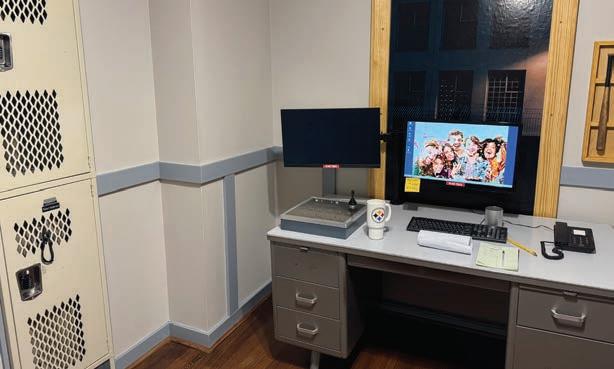
At Nerd Escape Room, you can select one of seven rooms— each with its own challenges. Which one will you choose?
Prison Break: You are in jail. You must navigate from your cell through a maintenance room and into the guard’s office to earn your freedom.
Dracula: Welcome to the Dracula Museum with its haunting artifacts. Can you make your way through the third room and face Dracula?
The Showdown: You and your team are a bunch of mobsters about to rob the biggest crime family in the city. Are you up to the challenge?
City With No Sun: You cannot use your smartphone or any light source to solve the puzzles. Your vision will be no help in these dark rooms.
Chernobyl: Uh-oh, the KGB/FSB has arrested you and slammed you in a holding cell. Can you escape before its backup shows up?
The Return: You arrive home. Your family has vanished. There is a letter on the table. What’s going on?
The Gallery: You are an art thief looking for the most expensive pieces. Can you pull off your biggest heist yet?

BRINGING THE THUNDER
How Raleigh became a hot spot for amateur sumo wrestling
STORY BY ELLIOT ACOSTA
H akkeyoi (“Put some spirit in it!”)
This Japanese term of encouragement echoes through the west Raleigh park where two wrestlers are facing off, disrupting the calm of a peaceful Sunday morning. In response to these shouts, the wrestlers lunge forward into each other, colliding their bodies in a thunderous crash. The opponents push, pull and jostle for position until one is forced out of a circle etched into the sand. This is practice with the Raijin Sumo Club, the burgeoning club that has imported the Japanese sport of sumo wrestling to North Carolina.
The bout is followed by a brief coaching session, lead by one of the club’s cofounders, Eric Hyugen. With a sumo national championship to his name and a frame built like a tank, Hyugen would be an intimidating figure if it wasn’t for his pleasant disposition. Sporting a wide smile and infectious enthusiasm, Hyugen works with each wrestler to analyze every moment of the five-second bout as if it were an abstract arthouse film. The footwork of the
initial charge, the grips in each grappling exchange, the motion of every push and pull—all the minute details are examined and considered.
Overseeing the sumo of a dozen wrestlers at this particular practice is a stark distinction from when the club began. In the spring of 2021, Hyugen and fellow cofounder Jared Faulk met for the first time at North Carolina State University’s Miller Fields. What had united the two was an irresistible pull toward learning and becoming proficient in sumo wrestling. As novices to the foreign sport, the duo began their grassroots effort with only their passion for sumo and their ingenuity. The two claimed an open section of the public field, battling for space among the pickup soccer and frisbee games, then established a makeshift circle to wrestle in—known as a dohy—with a garden hose.
As they honed their balance, power and timing to either topple or push each other out of the dohyo, their sumo training began to gain the attention of onlookers and those who followed Faulk’s training chronicles on social media. The crew would pick up new training partners as they continued to practice. Riding the momentum of their growing sumo community, Faulk and Huygen decided to name the club. They adopted the Raijin namesake, evoking the Japanese god of thunder. Four years later, what started as a duo trying to find their place in sumo has blossomed into a club with over 30 members that has produced multiple United States Sumo Federation national champions.
Although Hyugen provides essential feedback on the wrestlers’ techniques, instruction at Raijin’s practices is a community event with other members offering their observations. Contrasting Japanese professional sumo’s deeply rooted origins of being a secretive, serious, stoic and intense society, the Raijin Sumo Club provides unexpected levity, hospitality, and palpable joy.
Participation with the club doesn’t require an athletic background or even an understanding of sumo. All that is expected is a good attitude, an openness to learn and a small monthly donation, which is invested back into the club by means of events and equipment. Some of the members of the Raijin Sumo Club have been lifetime martial artists eager to acquire new skills. Other members are simply fans of Japanese culture looking for a means to fully immerse themselves in it. Few of the Raijin club members are mountainous human beings that encapsulate the traditional sumo archetype; instead, the club caters to all people, with men, women and children of all sizes finding their way inside the wrestling circle. Through these intense interactions inside the dohyo, a fellowship is formed. Members of the

sumo club do not see each other as rivals or opponents or simply training partners. Rather, there’s a familial bond.
Although the sport of sumo may have been the catalyst of the Raijin Sumo Club, what has propagated the club’s growth has been the connections it establishes beyond sport. “Wrestling is a pure human activity. We live in a cerebral world, and the Raijin Sumo Club is a reminder that we’re human,” shares Faulk. It’s the reckoning with our humanity that is at the core of the Raijin Sumo Club experience. An experience that, over the course of a 10-second sumo bout, reveals the duality of being human—how we can be both incredibly powerful and woefully imperfect. It’s an experience that is irreplicable on a screen.
Sumo is an unflinching, brutal and explosive sport, but the Raijin Sumo Club has been able to harness the sport’s energy to build a thriving and inclusive community. Learn about upcoming events and practices on Raijin Sumo Club’s social media accounts @ncsumo.
OPPOSITE PAGE: The Raijin Sumo Club welcomes anyone interested in the sport. Photo courtesy of Randy Basulto. ABOVE: Two wrestlers grapple within the circle. Photo courtesy of Quarter Athletics.




SIP AND SAVOR COOL TREATS
SCOOP DREAMS

Brodeto'ssoft-servegelatopairs nostalgiaandItalianflavor
STORY BY KYLE MARIE MCMAHON PHOTOS BY JESSICA CRAWFORD
When you walk into Brodeto—Scott Crawford’s Adriatic seafood-focused restaurant in Raleigh’s Iron Works—you might expect a wine list to remember or a delicate crudo to start your meal. But what you might not expect is the nostalgic joy of a towering swirl of pistachio soft serve, topped with Sicilian olive oil and a sprinkle of flaky sea salt.
And yet, for many guests, the gelato at Brodeto is the surprise standout of the meal.
“ We wanted to bring a little playfulness to the end of the dining experience,” says Conor Delaney, culinary director at Crawford Hospitality. “There’s something nostalgic about soft serve—but we wanted to do it with traditional Italian flavor profiles, using incredible ingredients and technique.”
Despite the name, the dessert isn’t technically gelato—it’s a soft-serve style version that sits below gelato and ice cream on the fat-content scale.

Traditional American ice cream contains 10% or more of fat; gelato falls within the 5–8% range. Brodeto’s soft serve hovers around 3–5%, creating a cleaner flavor profile.
“Fat gets in the way of flavor,” Delaney explains. “With this style, the flavors pop.” The texture is rich but not heavy—and the lower fat content allows them to serve it straight from the machine without masking the ingredients. “Time is an ingredient,” Delaney says. “And freshness is everything.”
To maximize the ingredient of time to its fullest potential, Delaney and Crawford chose a Carpigiani premium Italian ice cream machine that features three hoppers—typically filled with vanilla, a rotating seasonal flavor and a twist of the two—and allows for 18 quarts of each to be prepared at a time. The mix is kept cold and in liquid form, which means the gelato is as fresh as possible when it hits your cup.
G etting the formulation just right took months of testing. Delaney developed a custom base recipe to work with the machine and match the vision for the program. “Too much fat and it doesn’t work in the machine. Too little and you lose texture.” This recipe is essential when changing seasonal offerings, as it allows them to start with a standard base and then tinker with the flavorings, using different sugars or ratios depending on the added ingredients.
The result is a soft-serve program that’s unlike anything else in the Triangle—and arguably beyond. While many restaurants outsource their ice cream or use powdered mixes, Brodeto makes everything from scratch, bringing in Sicilian pistachios and Videri chocolate and crafting fruit-based seasonal sorbets in-house. “People come back again and again just to try the new flavors,” Delaney says. “It’s a great way to keep things fresh and seasonal—even in dessert.”

Scan the QR code
The decision to invest in such a specialized piece of equipment is part of Crawford Hospitality’s overall philosophy: no expense spared when it comes to creating food that resonates. “If one dish can hit home for someone, it’s worth the investment,” says Delaney. “That’s something Scott [Crawford] really believes in.” For them, expenses matter less than flavor and texture.
The gelato program was Delaney’s idea initially, but it came to life through a collaborative atmosphere that defines Crawford Hospitality. “If the dishwasher has a great idea, we’ll listen,” he says. “It’s about getting the best out of everyone. And that is done through collaboration.”

D elaney’s personal favorite?
Gianduja—a chocolate-hazelnut blend like Nutella, topped with Videri chocolate and hazelnut butter. It’s comforting but still has complexity. “One day I’d love to try a black sesame flavor, but we try to keep things through an Italian lens. We do try to push the envelope while still honoring tradition.”
A nother past favorite is pumpkin with an oat crumble from the fall. Vanilla with Sicilian olive oil and sea salt is always on one handle. And a rich affogato made with espresso from Raleigh’s own Black & White Coffee Roasters is available with any of the pairings.
This year, Delaney was accommodating enough to choose a return to pistachio in July so our readers knew what to expect, but August will feature another fruit sorbet (flavor not yet known). Typically, summer flavors are fruit-based and dependent on freshness and availability. Last summer, July featured a ripe peach sorbet, while August brought a fresh melon flavor—both paired with thoughtful toppings.
Brodeto’s gelato is more than an afterthought—it’s an experience in itself. It’s playful, nostalgic, and just indulgent enough to feel like a treat, especially when the heat kicks up.
OPPOSITE PAGE: Brodeto's pistachio gelato.
ABOVE: A sorbet-like peach gelato and the affogato, this time served with pumpkin gelato.
to learn more about Conor Delaney's road to becoming Chef Crawford's righthand man.
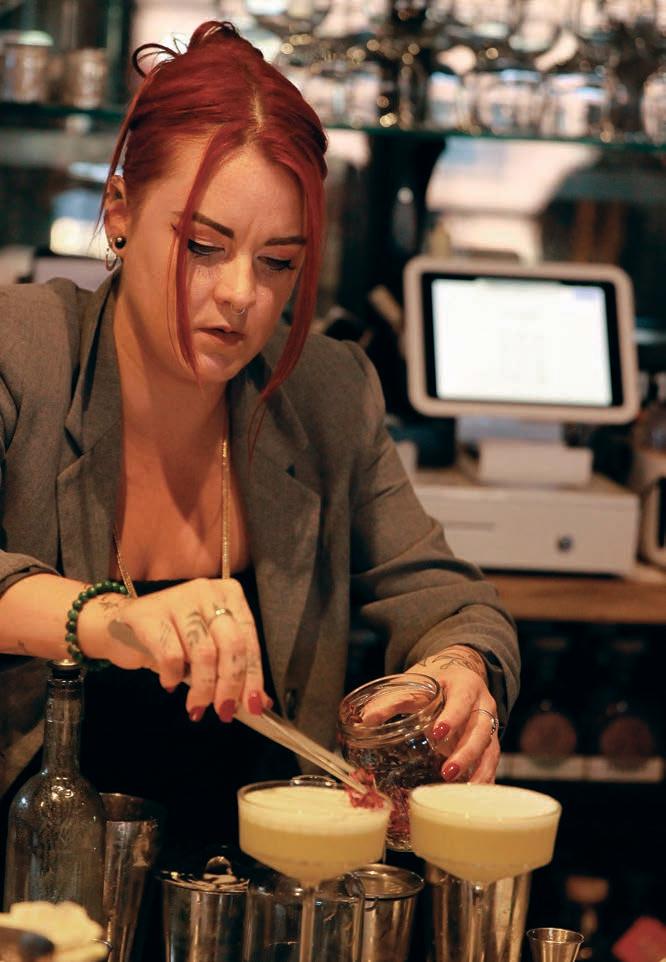
Being a part of the North Carolina Restaurant and Lodging Association’s preliminary rounds for Mixologist of the Year felt like being in an episode of The White Lotus somebody metaphorically dies in the first 20 minutes, and then we flash back to “one week earlier.” Except in our case, it was two weeks earlier. Monday, April 14. Piccione Vineyards. Ronda, North Carolina. Ground zero.
That’s where the journey began for NCRLA’s 2025 Mixologist of the Year, set to be crowned on Saturday, August 4 at the Angus Barn’s Bay 7 inside Durham’s American Tobacco Campus. Mark your
MIX, MUDDLE, MAYHEM!
Inside North Carolina's Wildest Cocktail Competition:
From sausage-infused rum to BBQ cocktails with pork rind garnishes—the road to
NCRLA's
Mixologist of the Year
LEFT: Kayla Wenzel of Native Fine Diner in Greenville, North Carolina, tops off her Mycelial Crown, featuring 1000 Piers Gin and a mushroom reduction of four different locally grown mushrooms, egg white, jasmine infused wildflower honey and pine oil mist.
calendars. Bring your taste buds.
Day one at Piccione was all about getting our footing—watching the mixologists and distillers roll in, set up their stations and hustle against the clock. Rules for them. Rules for us. With embargos set, we couldn’t show off any of the amazing drinks until after the judges narrowed it down to 10, moving to the next round. We’ve been sitting on this like a juicy piece of gossip, just waiting for the green light from the one and only heidibillottofood.com.
The preliminary round judges— Stephanie Elliott (Merle’s/Piccione Vineyards), Amy Waas (Cheeni/Bar Beej) and Esteban McMahan (Top of the Hill Restaurant & Brewery/Distillery)—had a monstrous task: trimming down 15 cocktails and 15 mocktails to just 10 each. The odds were good, but the competition was brutal.
The drinks? Oh, they brought the crazy: rum infused with Neese County sausage, dirty rice orgeat, sage-infused vermouth, pine flower dust and vegan strawberry foam. Are we still talking about cocktails, or is this an episode of Bizarre Foods with Andrew Zimmern?
Talking shop is part of the process—and honestly, one of the
STORY AND PHOTOS BY DATHAN KAZSUK
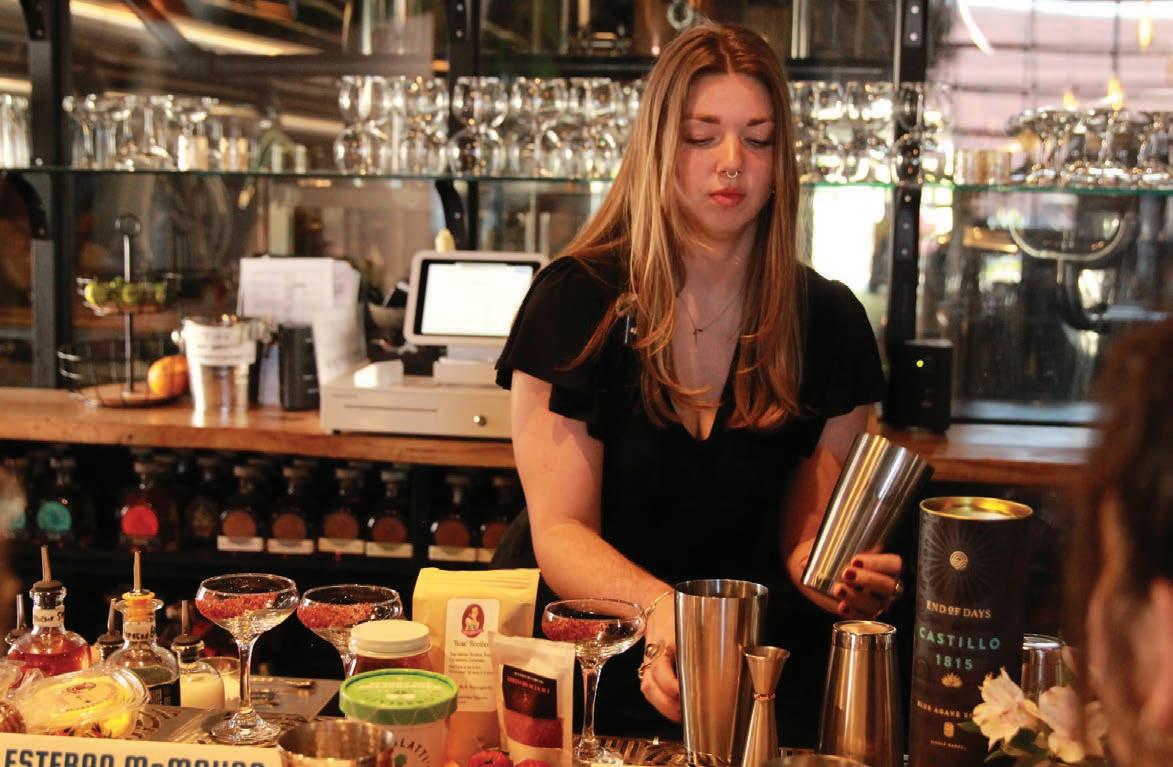
best parts. During our two full days of media coverage, we sat with brilliant minds like Billotto, Got to be NC’s Chad Blackwelder, Piccione Vineyards’ vineyard manager Dustin Gentry and NCRLA’s president, Lynn Minges. Whether it’s chatting about food trends, how frost recently destroyed crops, cocktail culture or where the industry is heading next, it’s like pulling up a chair to a secret society meeting—except everyone’s nicer and better hydrated.
Fast-forward to Monday, April 28, and things got even more bizarre—in the best possible way.
Aquafaba (a starchy liquid that remains after cooking or canning chickpeas) replaces egg whites. Thick purple yam syrup. A vinegar-based BBQ cocktail with a torched oak plank, crowned with a pork rind dripping in
sticky barbecue sauce. Why stop there? We also sampled a rum steeped in roasted shrimp shells—it tasted exactly like you would imagine. Like licking the floor of a shrimp boat—but heck, it was creative!
Even the NA (nonalcoholic) options came to play. One mixologist combined tomato and asparagus into a legit refreshing sipper, paired with a salted lager from Resident Culture Brewing that was so good it almost made us rethink every bad NA beer experience we’ve ever had.
PICCIONE VINEYARDS:
ON TO THE SEMIS
Set inside the relatively new La Collina tasting room high atop a hill in Ronda, overlooking acres of vines, these mixologists were fortunate to make it to the semifinals and the respective distilleries they have partnered with.
Ashley Sarkis of Yunta Nikkea in Charlotte, partnered with Oaklore Distilling Co. in Matthews; Connor Schlosser of Folia in Charlotte, partnered with Chemist Spirits in Asheville; Lauren Burkert of Free Range Brewing in Charlotte, partnered with Great Wagon Road Distilling Co. in Charlotte; Sean Teague of Chief’s Modern Cocktail Parlor in Charlotte, partnered with Southern Artisan Spirits in Kings Mountain; and Sekani Akunyun of Lorem Ipsum Listening Bar in Charlotte, partnered with Mystic Farm & Distillery in Durham.
END OF DAYS: ON TO THE SEMIS
On the second installment of the NCRLA finding its Mixologist of the Year, the judges and I went to Wilmington’s End of Days Distillery. The battle was fierce, as nine participants were narrowed to five. Below is the list making it to the semifinals.
Natalie Takacs of End of Days Distillery in Wilmington prepares her Primrose of the Pines drink.

Kayla Wenzel of Native Fine Diner in Greenville, partnered with The Hackney Distillery in Washington; Meggan Mendoza of Weldon Mills Distillery in Durham, partnered with Weldon Mills Distillery; Natalie Takacs of End of Days Distillery in Wilmington, partnered with End of Days Distillery; Sarah McCabe of The Longleaf Hotel in Raleigh, partnered with Cook’s Mill Whiskey in Raleigh; and Travis James of Julep Contemporary Kitchen in Greenville, partnered with Crush Vodka in Greenville.
I wish the Triangle was a little more represented in this competition, but at least we’re there. We have one mixologist from Raleigh, and a couple of distilleries from Raleigh and Durham are still in the battle—let’s cross our fingers.
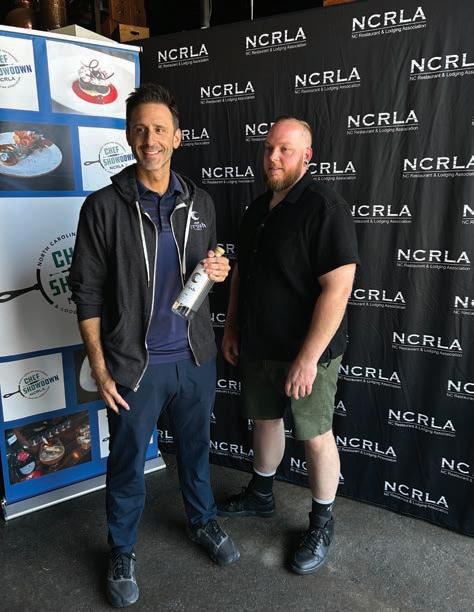

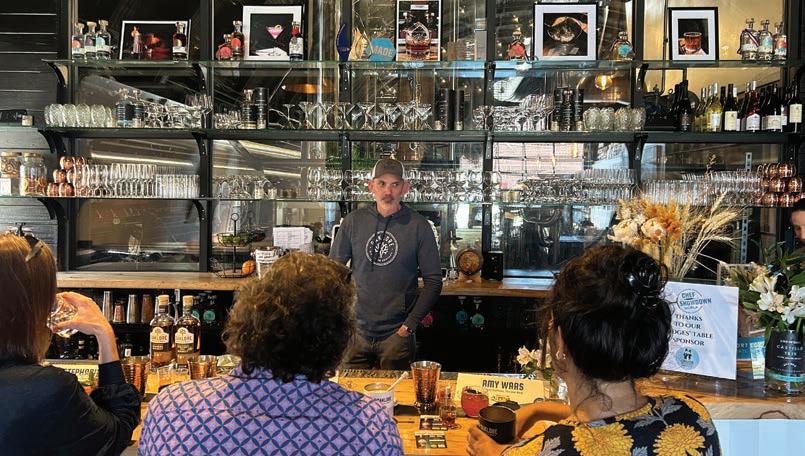

PICTURED THIS PAGE: The showdown in Wilmington was two days of all things mixology.
BY JENNIFER PRIMROSE and DATHAN KAZSUK
SUMMER BEER REVIEWS
We asked local breweries to select one of their flagship beers that would be perfect for the Carolina summer heat. Here's what they picked out.
PERRY'S EPIPHANY HEFEWEIZEN PEACH OUT SOUR ALE
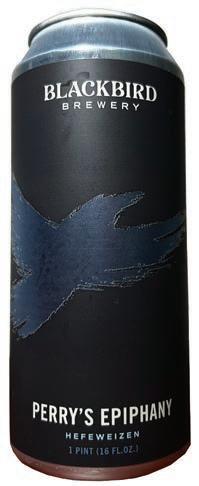
Blackbird Brewery
With an ABV of 4.8%, this Hefeweizen offers a refreshing and authentic experience. Half of the wheat used in this beer is grown just four miles from the brewery at Perry Family Farm in Rolesville. This beer delivers the classic Hefeweizen notes of banana and clove. The wheat base provides a soft, bready backbone, while the natural carbonation adds a gentle effervescence.
– DK
Blackbird Brewery
Wake Forest 919.263.1955
blackbirdbeer.com

Sneaky Penguin Brewing Company
This 6.0% ABV sour ale artfully balances tartness and sweetness, making it very approachable. It pours a hazy golden hue, hinting at its juicy contents. Inviting aroma of ripe peach and apricot, offering a preview of the flavors to come. The light-bodied nature, combined with its refreshing crispness, creates a harmonious balance between sweet and tangy notes.
– JP
Sneaky Penguin Raleigh 919.239.4212
sneakypenguinbrewing.com
BIG SOMBRERO GOLDEN ALE

Edit Beer Co.
Pours a clear, golden hue with a light, frothy head. The aroma is a subtle blend of citrus and malt, hinting at the flavors to come: bright lime zest and a touch of salinity from the sea salt. A well-crafted, flavorful beer that captures the spirit of summer. Its combination of lime and sea salt adds a refreshing twist to the traditional golden ale, making it a must-try for those seeking a light yet flavorful brew. – JP
Edit Beer Co. Raleigh 919.307.8336 editbeer.com
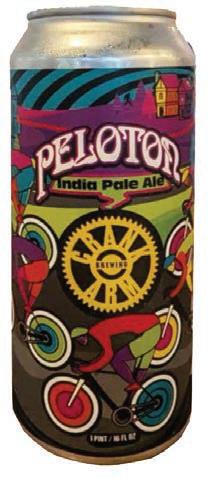
Crank Arm Brewing
This beer boasts a 6.5% ABV, delivering a balanced profile that's both approachable and satisfying. It pours a clear golden hue, releasing a bouquet of citrus and pine aromas that invite the first sip. On the palate, it offers a harmonious blend of hoppy bitterness and subtle malt sweetness. Peloton is a well-crafted beer that embodies the essence of the brewery's dedication.
– DK
Crank Arm Brewing Raleigh/Durham 919.324.3529
crankarmbrewing.com
ABOUT THE AUTHORS
Dathan Kazsuk and Jennifer Primrose are Triangle Around Town, a Raleigh-based lifestyle platform dedicated to uncovering the stories behind wine, beer, spirits, food and travel. Since 2013, they have built a reputation for thoughtful storytelling that highlights small businesses, artisan producers and hidden gems from across North Carolina and beyond— offering readers a taste of culture through every feature. With years of experience and a deep connection to the community, Triangle Around Town brings passion and purpose to every piece. They can be found on Facebook, Instagram, TikTok, X and YouTube as Triangle Around Town. You can also find them at trianglearoundtown.com.

PELOTON INDIA PALE ALE





New Life for an Old Couch Triangle
experts invite you (and your couch) to the circular economy
STORY BY CAITLIN WHEELER
Dan McKenzie was an upcycler before upcycling was a thing. Circularity was a side effect of his family’s business—a business McKenzie couldn’t avoid. “Growing up in the antiques world was like growing up in the Mafia,” he jokes. “You were part of it whether you liked it or not.” Luckily, McKenzie loved it. He spent his childhood memorizing wood types and learning to identify design styles. By the time he was 13, seasoned collectors were approaching him at estate previews, asking for the age or make of a piece. “It was a thrill,” he says. So was traveling the country with his mother, appraising antiques for an Antiques Roadshow–style show.
McKenzie embraced the industry, focusing his early career on restoring antiques to their original elegant form. In 2001, as the antique market started falling and the era of disposable furniture was on the rise, he founded Finish Pros—partly to preserve beautiful classics, but also to champion well-made but less glamorous pieces. “A lot of contemporary furniture is made to fail,” he says. “When it’s designed to be shipped flat and assembled, it

doesn’t have traditional joinery, which means you’re really sacrificing lifespan.” In contrast, there are plenty of brands with solid construction that are perfect candidates for upcycling.
At Finish Pros, McKenzie’s work has been transformative rather than purely restorative. Clients love the opportunity to customize fabrics and finishes, he says, though his designers try to steer people away from “super trendy colors or patterns.” Some ask to change the structural look of a piece to modernize it, getting rid of details like extra swoops or scrollwork. One client wanted to straighten the signature curved back on a Duncan Phyfe 1940s mahogany handcarved sofa, while another client asked to lacquer over a high-end Henkel Harris dining set with “true heirloom quality.” McKenzie says the results were gorgeous and fresh-looking, though he secretly prefers to restore a piece to its original look. “I’m just an antique purist,” he laughs.
Most cities and towns in Wake County offer bulk item pickup—either for free or at a small charge—and while it might seem
like magic when that giant saggy couch or that outdated leather recliner disappears from the curb, those pieces end up—very unmagically—in a landfill. By reusing and upcycling furniture, individuals can take some of the eco-burden from municipalities, and this circulation can be more effective and less costly than recycling programs.
McKenzie came face to face with the actual cost of recycling several years ago, while working on a hospital project that involved stripping and reupholstering more than 40 recliners. The client was delighted, but McKenzie was startled by the discarded rolls of vinyl, piled into an enormous pyramid. “I had never seen the waste piled up in one place like that,” says McKenzie. “I was thunderstruck.” He knew that between that mountain of vinyl and the old foam padding they’d removed, he’d have to order a second dumpster, and he couldn’t stand the thought.
Determined to dispose of the materials in an ecofriendly way, McKenzie learned that it wasn’t as simple as dumping the vinyl in a blue recycling bin. Health care facilities require tough fabrics that are especially durable, easy to disinfect and can be treated with antimicrobial coatings, and while this helps prevent the spread of disease, it also makes the textiles tricky to recycle. Tricky but not impossible, and McKenzie tried various options—including driving hundreds of miles to a facility that “melts” vinyl at extreme temperatures, and spending thousands of dollars to have materials shredded and compressed.
For McKenzie and Finish Pros, the obsession with recycling snowballed after the “vinyl pyramid” incident. They began aggressively recycling scrap foam, vinyl and fabric. They even got a giant magnet to collect discarded staples from the work room floor at the end of every day. “By the end of a two-day period, we can fill a whole milk jug with staples,” says McKenzie. “Instead of going to the landfill, that’s eight pounds of metal headed for recycling.”
There is a fundamental tension at the core of textile design. Home-use fabrics don’t need to meet the impenetrable standards required for health care sites, but they are meant to withstand kids’ dirty hands, cats’ claws, dogs’ shedding, wine spills and chocolate smears. At the same time, how do these ultra-durable textiles fit in a closed-loop business model? The point of furniture textiles is to withstand, and the point of recycling is to tear apart and reuse.
McKenzie’s deep dive into textile recycling led him to the Wilson College of Textiles at North Carolina State University, one of the few textile colleges in the country. While the college doesn’t offer recycling services, McKenzie found experts eager to solve the same puzzles he grapples with.
Everyone at the Wilson College of Textiles is multitalented and multidisciplinary. “You have to be,” says Professor Karen Leonas, who has a PhD in textile chemistry, physics and polymer engineering, and now focuses on
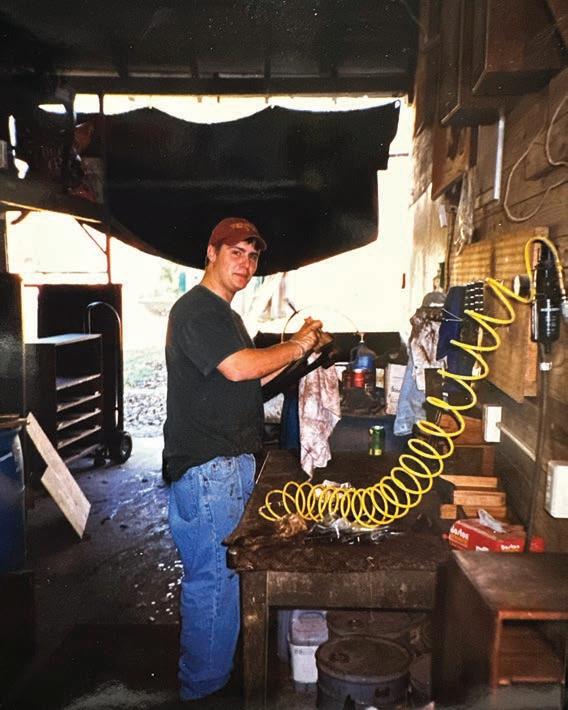
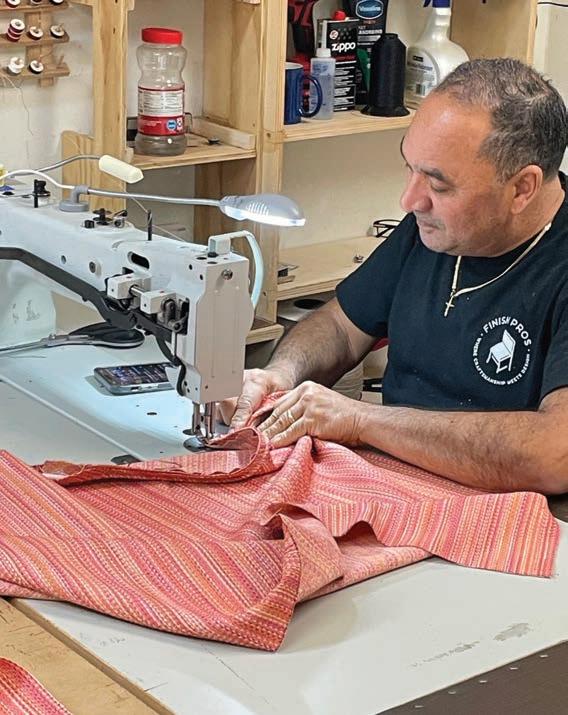
ABOVE, FROM TOP: McKenzie as a teenager, already gaining the skills he would later use to start Finish Pros. The workers at Finish Pros upcycle in a variety of ways, including reupholstering. Photos courtesy of Dan McKenzie and Finish Pros.
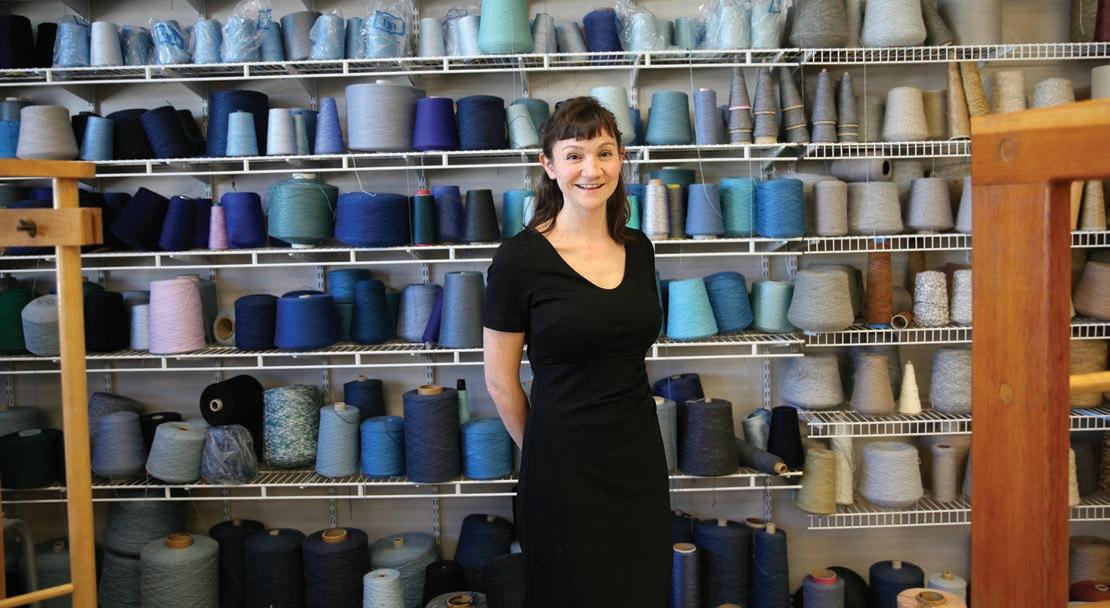
sustainability. “This industry is constantly changing,” she says, “and you have to be forward-thinking and able to move deftly between art, design and science.”
From a technical perspective, Leonas says recycling textiles depends on fiber content, and determining a textile’s fiber content requires near-infrared technology. “If I know what it is, I can shred it, break it into monomers and then repolymerize and reuse it,” Leonas explains. She adds that a simple cotton versus a blended fabric can’t be recycled the same way, and that for upholstery, it’s most eco-friendly to avoid mixed-material fabric.
Leonas studies the development and recycling of sustainable materials at the Wilson College of Textiles and she brings her interdisciplinary thinking to Wilson’s sustainability committee, where she interacts with likeminded colleague Professor Janie Woodbridge. A textile designer with a background in fine art and over a decade of textile industry experience, Woodbridge approaches technical sustainable design with a focus on visual appeal.
“I love that there’s always a puzzle to solve,” says Woodbridge, who is fresh off of winning one of N.C. State’s Outstanding Teacher Awards. “We always design from within a box, whether that’s a hospital waiting room or a public lobby or a high-performance material for sports.” For Woodbridge, the center of any puzzle is figuring out how to make fabric durable and sustainable, but also visually interesting.
A talented artist, Woodbridge likes to start her projects with a “hands on” approach, sitting down at a loom and
weaving original designs in the most ancient way. “Textile design is such a primitive thing,” she says, “but I think mixing in the engineering, chemistry and CAD side is paving the way for a more sustainable future.”
While Woodbridge works to make beautiful, sustainable fabrics, and Leonas works in the lab to make and break the perfect fabric, both professors see the need to think like an economist to incentivize people not to toss furniture into the dump. “We need to work together to extend the life of a product,” says Leonas. “We want to help people learn how to use the recyclable market for furniture: to donate, to resell, or to reupholster and reuse.”
Woodbridge offers some practical tips: “Choose furniture that leans more traditional than fashion-forward; something that won’t be noticeably outdated within a year or two. Instead, rely on pops of color, like pillows or throws. Strive to be conscientious about not cycling quickly through big items.”
Perhaps professors at the Wilson College of Textiles are getting their message out, as McKenzie sees one encouraging trend over the past few years: the age of his clients. “We’re seeing a lot more young people,” he says. “These are savvy consumers who find well-built older furniture on Facebook Marketplace or at garage sales, and come to us to have it customized.” McKenzie hopes this shows the younger generation’s commitment to the environment and their recognition that reuse is key to a circular economy.
Professor Janie Woodbridge in the Wilson College of Textiles’ handweaving lab. Photo courtesy of Wilson College.




NICOLE WHITE KENNEDY
CAPTURING THE NATURAL MOMENT
Raleigh-based artist Nicole White Kennedy creates realistic oil paintings that capture the everyday moments of people living their lives. In her recent work, Summer BFF, Kennedy depicts a narrative of two best friends hanging out on the beaches of North Carolina, with their bodies blending into each other and the surrounding beach.
Her technical approach lends an impressionistic quality and a sense of movement for which she is well known. Kennedy brings her scenes to life by painting while the oil paint is still wet. This technique allows her to work with a limited color palette of six or seven colors, blending them into new hues. For Summer BFF she began with an abstract background that interprets the water and beach, using a palette knife, brush and dripping paint. This foundational layer allows her to build the figures on top while integrating the vibrant background colors into their skin tones. As she gradually constructs the painting, stroke by stroke, the scene begins to come together like magic.
This summer, Kennedy’s paintings will be featured in several exhibitions, including the Oil Painters of America’s National Juried Exhibit, the National Oil & Acrylic Painters Society’s Spring Online International Juried Exhibition and the Blowing Rock Women’s Show, among others.
To view more of her work, visit her website, nicolestudio.com, or check out her Instagram, @nicolefineart and Facebook, @nicolewhite.kennedy
“What attracts me the most is watching people in their environment, being spontaneous and capturing the moment and attitude—especially at North Carolina beaches or in street scenes.”
— Nicole White Kennedy

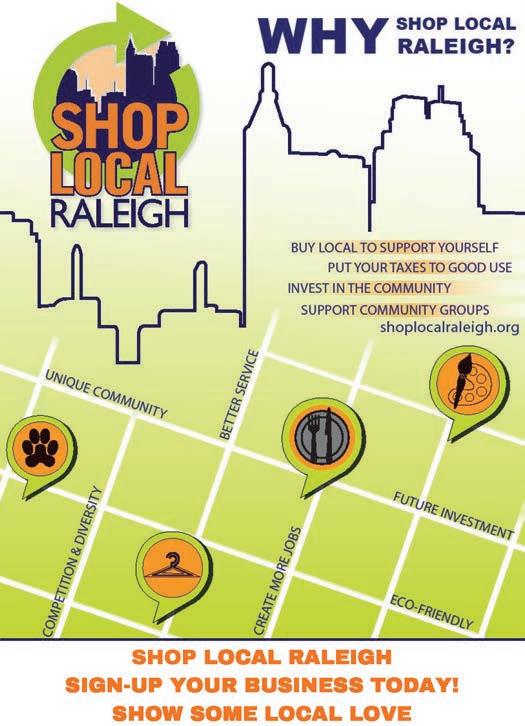
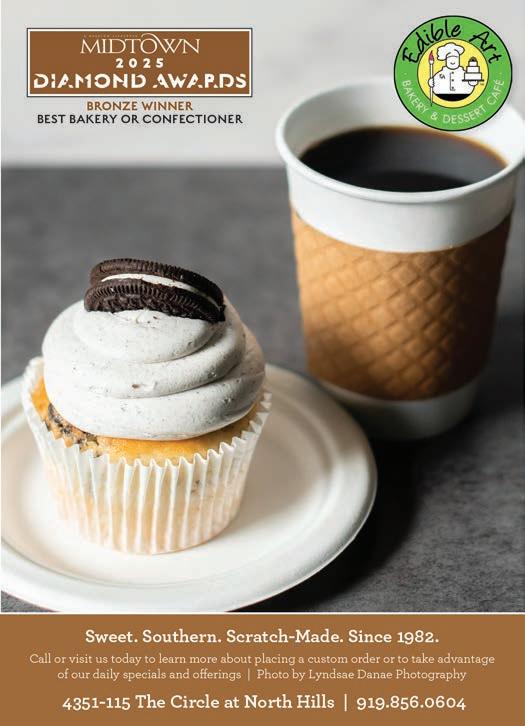


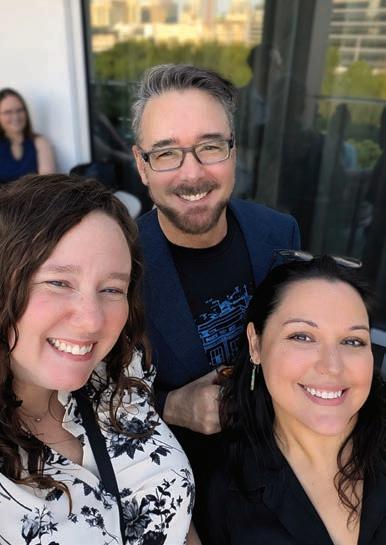
CLOCKWISE FROM LEFT: Our rooftop photoshoot at The Willard gave us an opportunity for teambuilding (and some antics). Our models, Hugh and Sarah Murphy, with photographer Jessica Bratton get a bit silly by the end of the night. Writer Jennifer Primrose and content editor Dathan Kazsuk enjoy a cocktail. Director of sales Collin Pruitt gets his headshot taken (wearing shorts, of course). Jessica Bratton photographs Raleigh rapper Shame Gang outside the CAM (keep an eye out for that article). Editor Kyle Marie McMahon, art director Sean Byrne and Jessica Bratton pose before the chaos at The Willard photoshoot began.
OPPOSITE PAGE, TOP TO BOTTOM: The Willard has some delicious cocktails, which we made sure to taste-test before the photoshoot. These are the Willard Barrel-Aged Old Fashioned, Ginger Island and Willard Margarita. Marketing advisor Jessica Douglas, Collin Pruitt and Kyle Marie McMahon set up (and photograph) some “Bites to Share” for a group photo at The Willard, which we also happily got to taste-test.



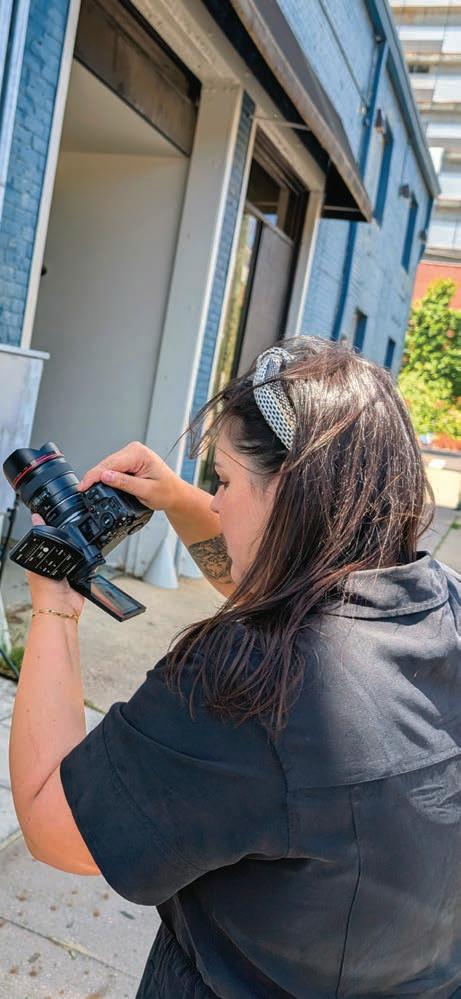

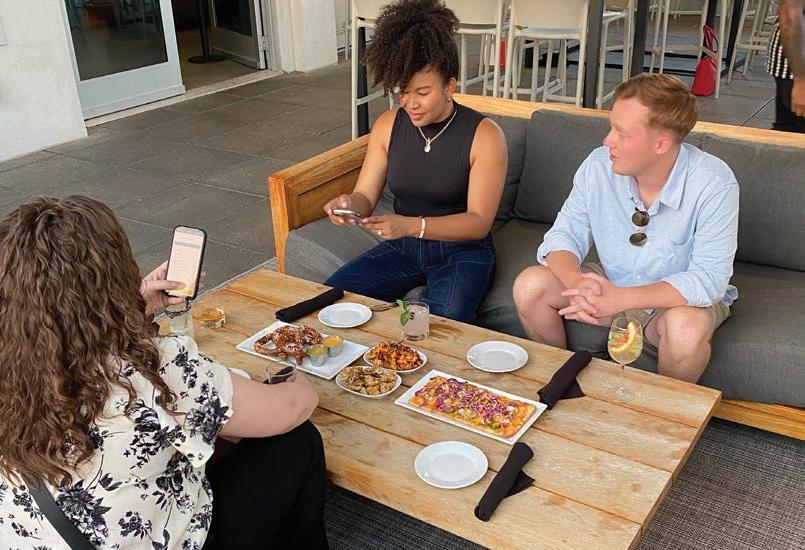


CLOCKWISE FROM LEFT: Northwest Nazarene took on Tampa in the college Division II Baseball Championship at the USA Baseball National Training Complex in Cary. Kyle Marie McMahon with her oldest son, Anthony, and husband, James, at a Carolina Hurricanes hockey playoff game. Chef Conor Delaney of Crawford Hospitality shares the selection of gelato at Brodeto, which was promptly devoured. The Wrexham Red Dragons were one of the 48 men’s teams to compete at the TST 7-on-7 soccer tournament held at WakeMed Soccer Park in Cary.
Send us your Snapshots at snapshots@midtownmag.com

